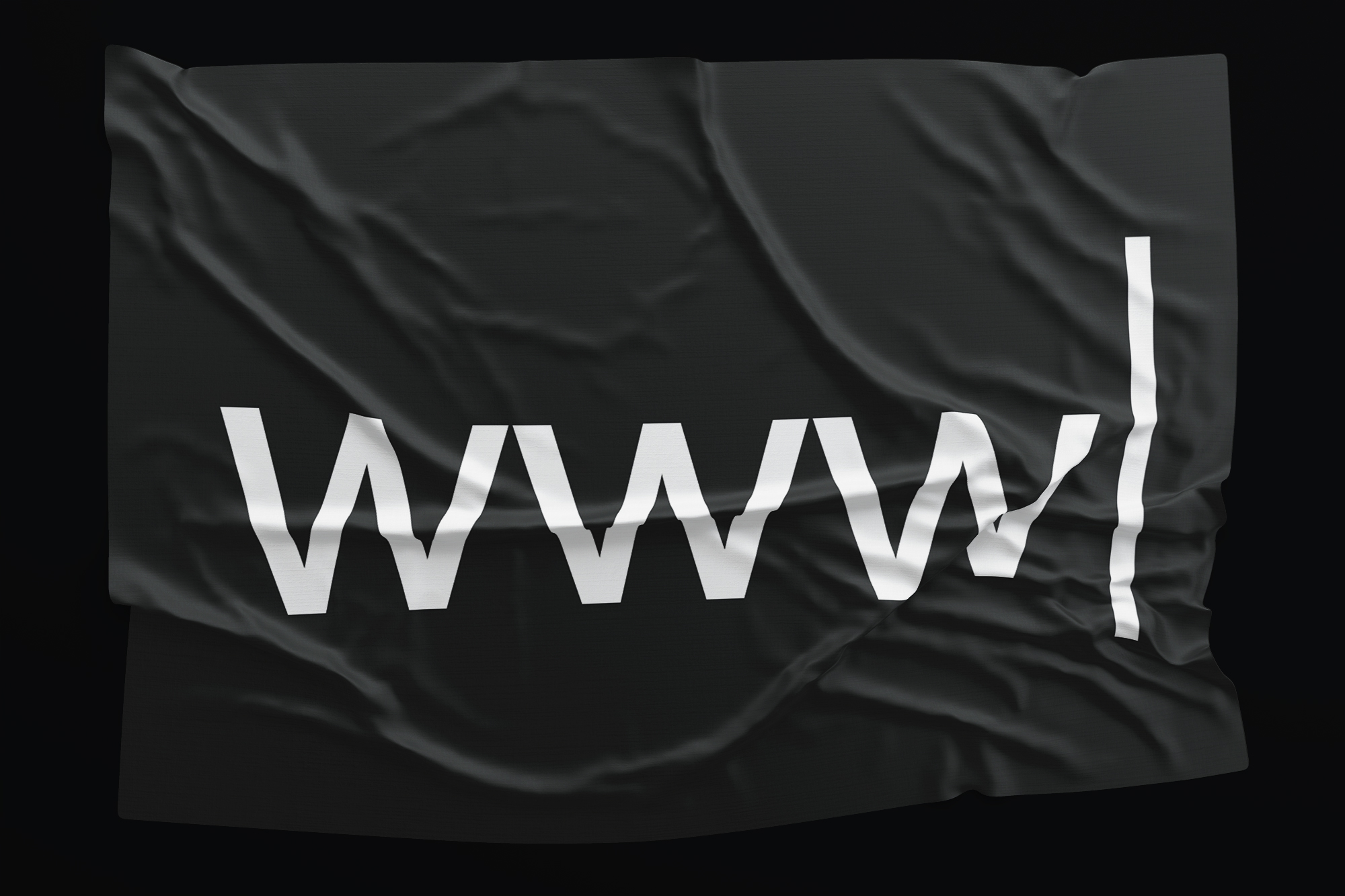
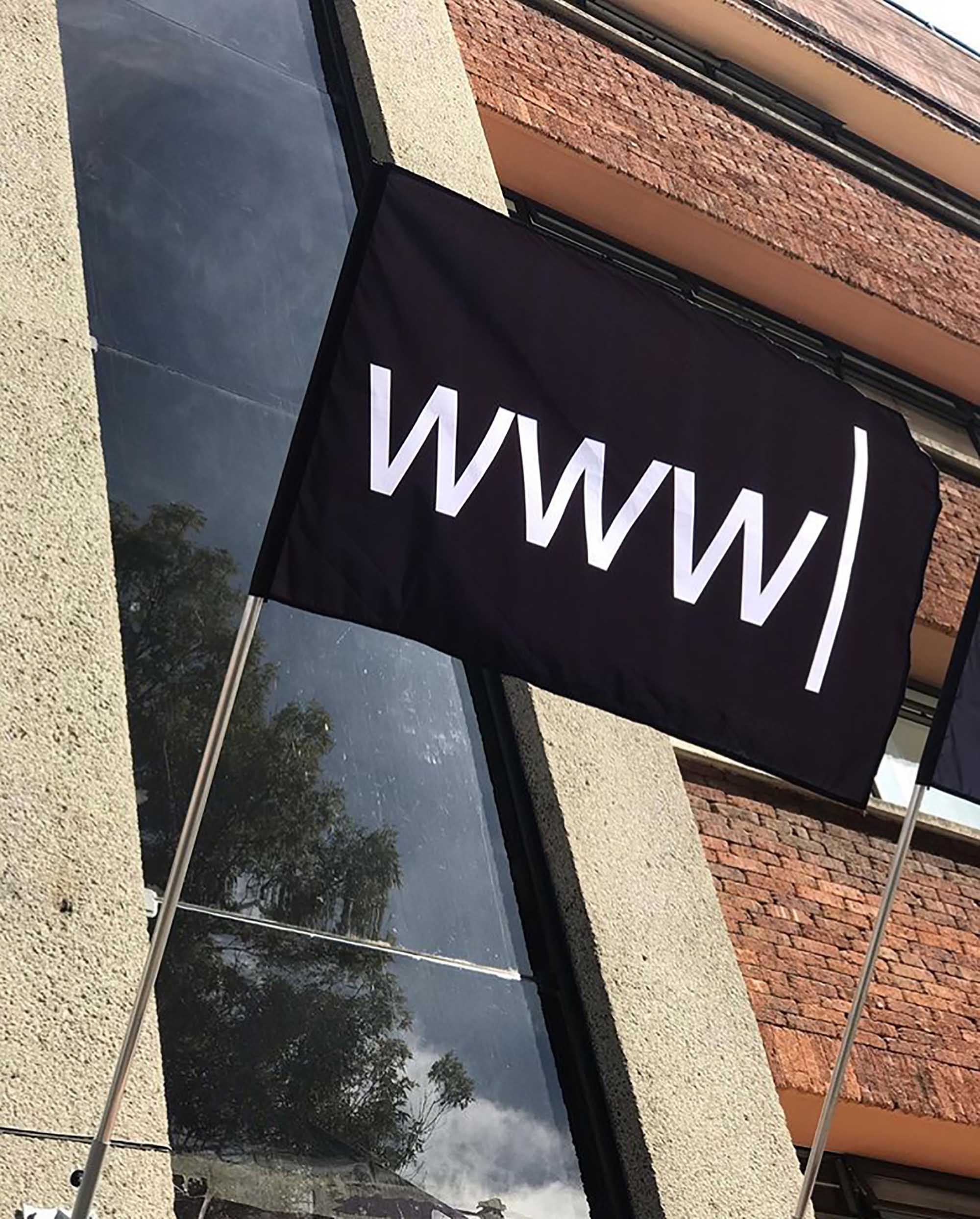
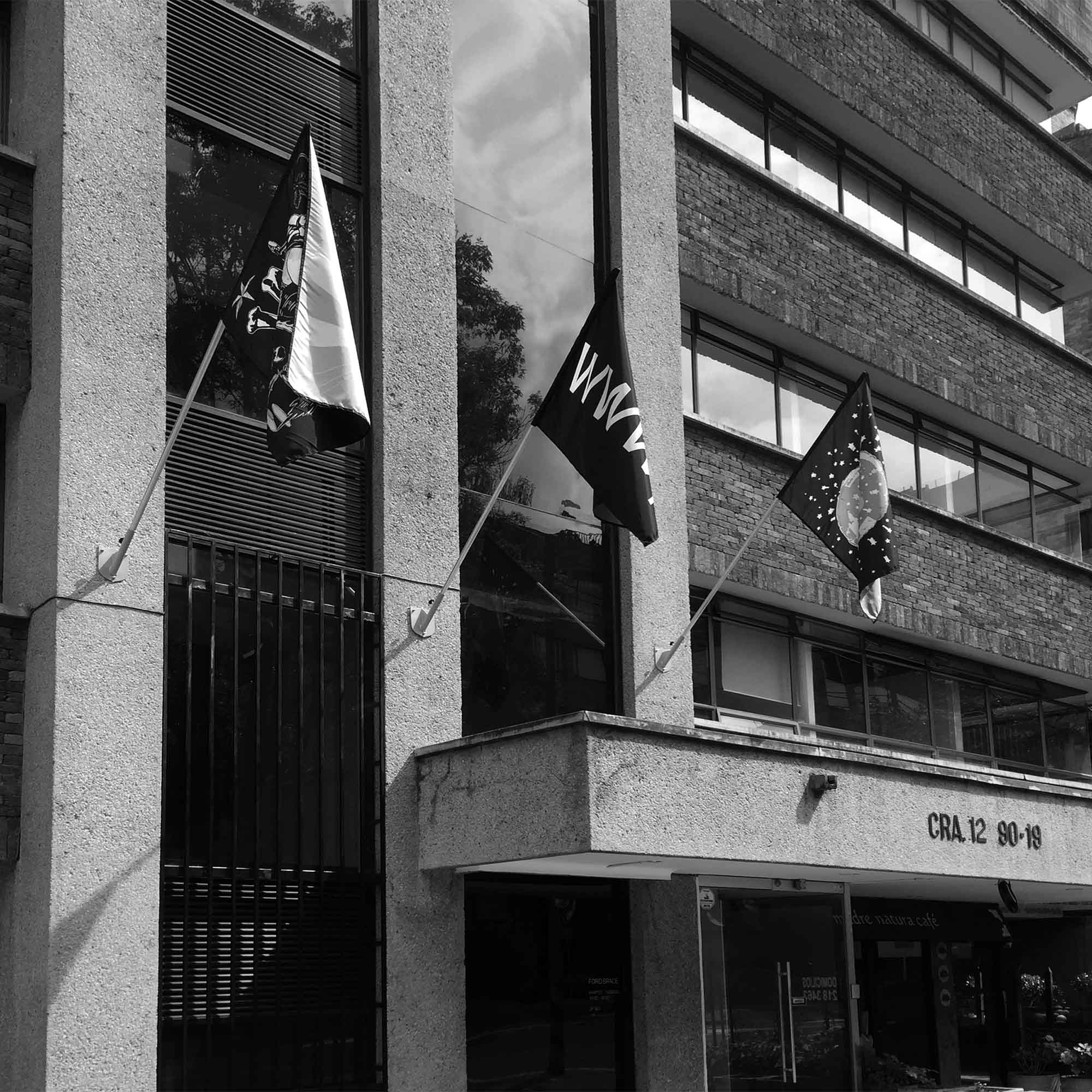
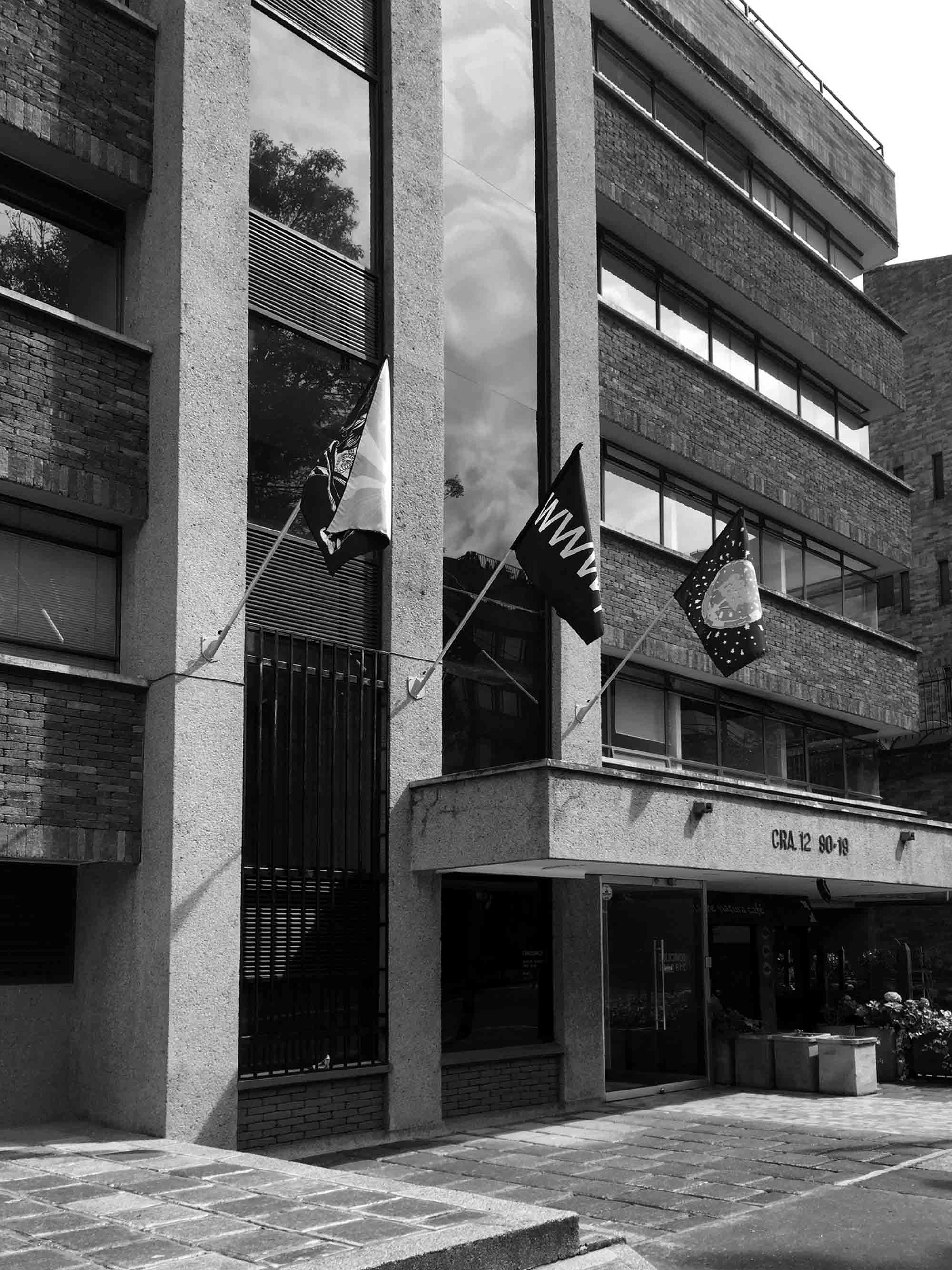


Mesh was the name that Tim Berners Lee gave, in 1989, to what we know today as the World Wide Web or World Computer Network. In the original document, titled Information Management: A Proposal, he explained that it was important to use a hyperlink system similar to mind maps, with circles (nodes) and arrows (links), instead of tables or hierarchical systems. So first, I used this prefix, exactly as we see it in browsers, to point out my interest in cognitive processes such as enumeration, comparison, and association of information, which is the origin of thought of this computer system. Secondly, because it contradicts the notion of a flag in the sense that they demarcate territories, while the very essence of www is the free and infinite possibilities of navigation. Finally, there is an intention to point out the dystopian reality due to the pandemic, in which most of our social interactions happen precisely through "the web".
Foro Space, Four Flags Project
Foro Space, Four Flags Project
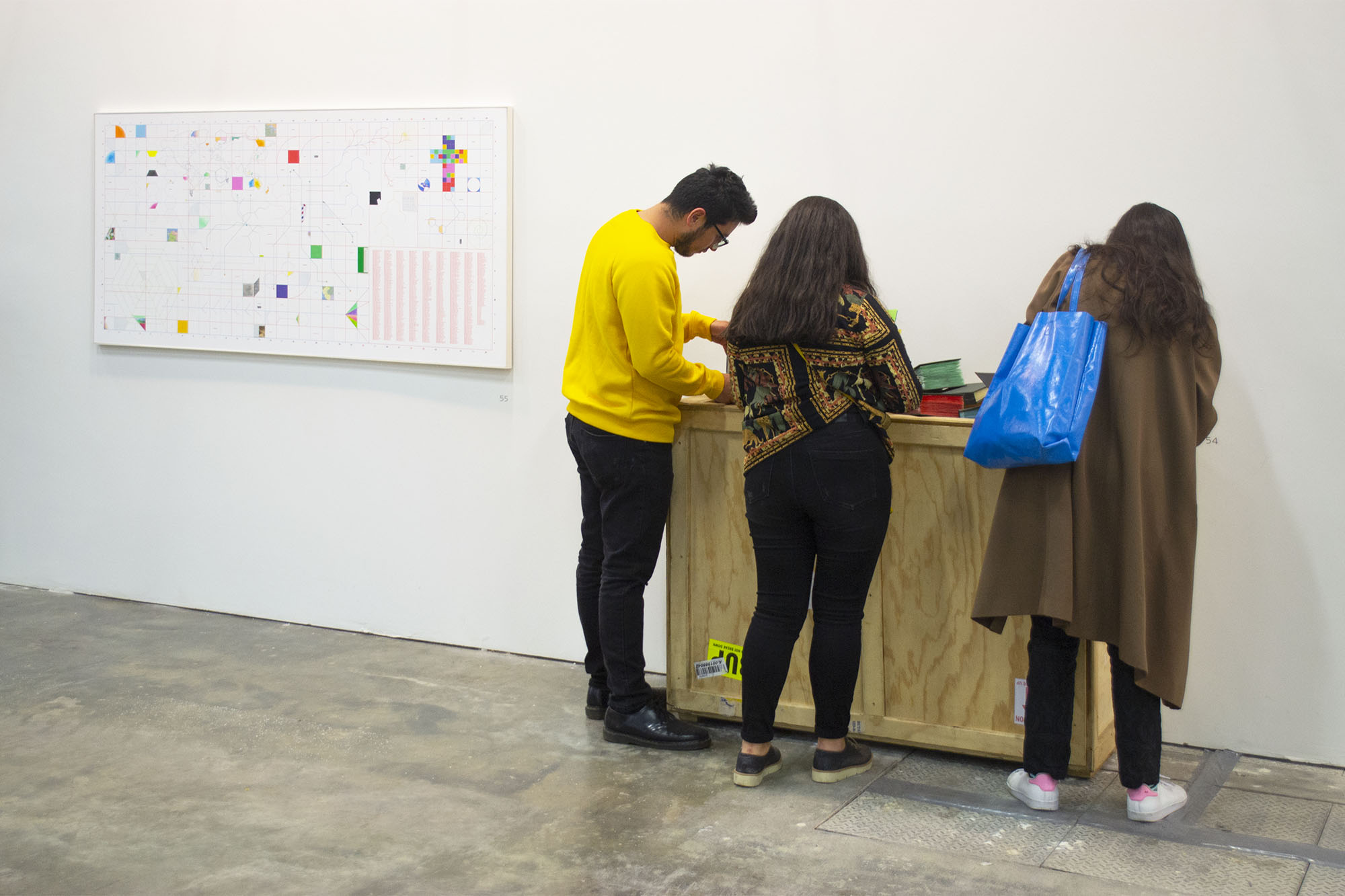

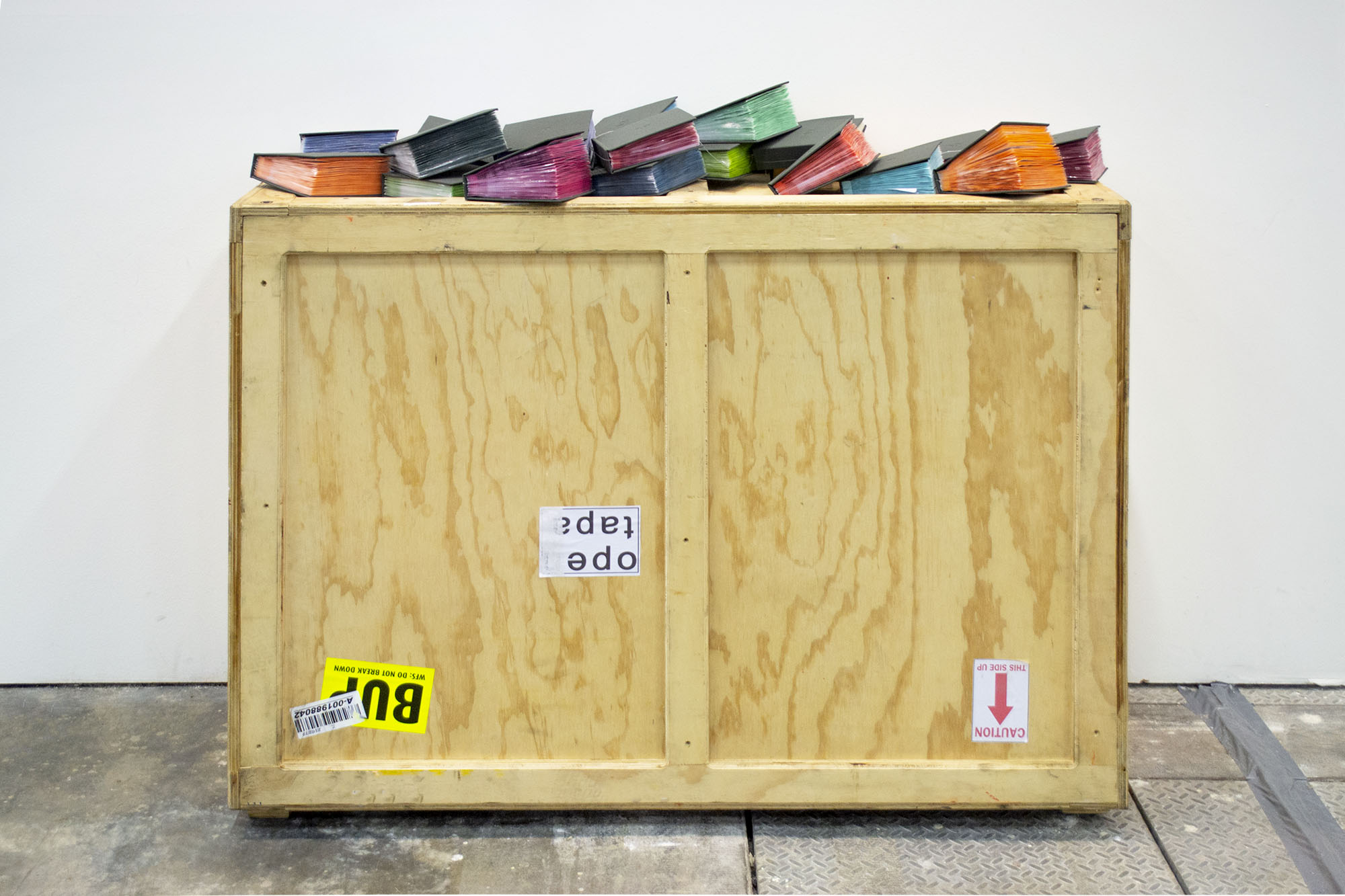

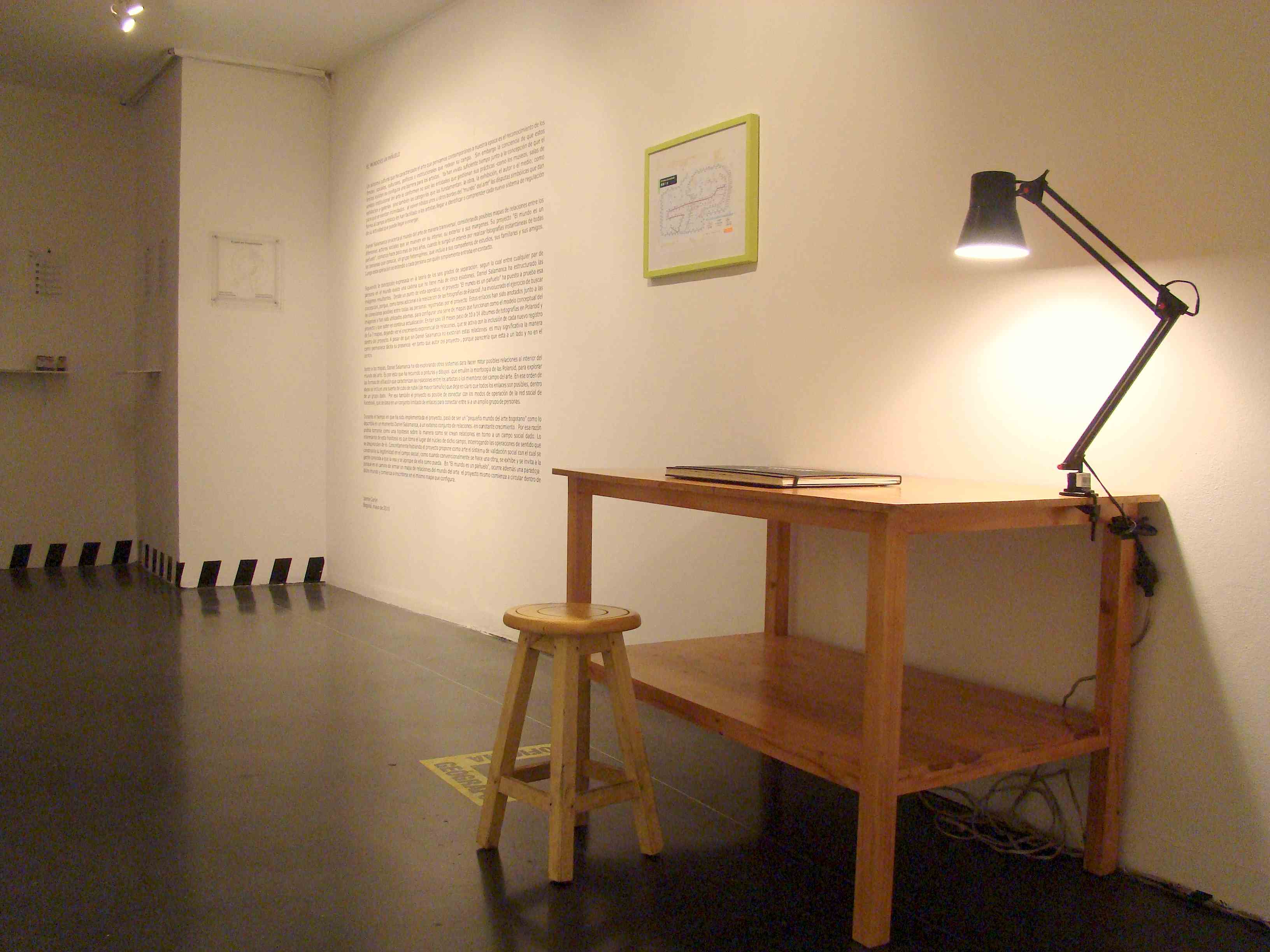



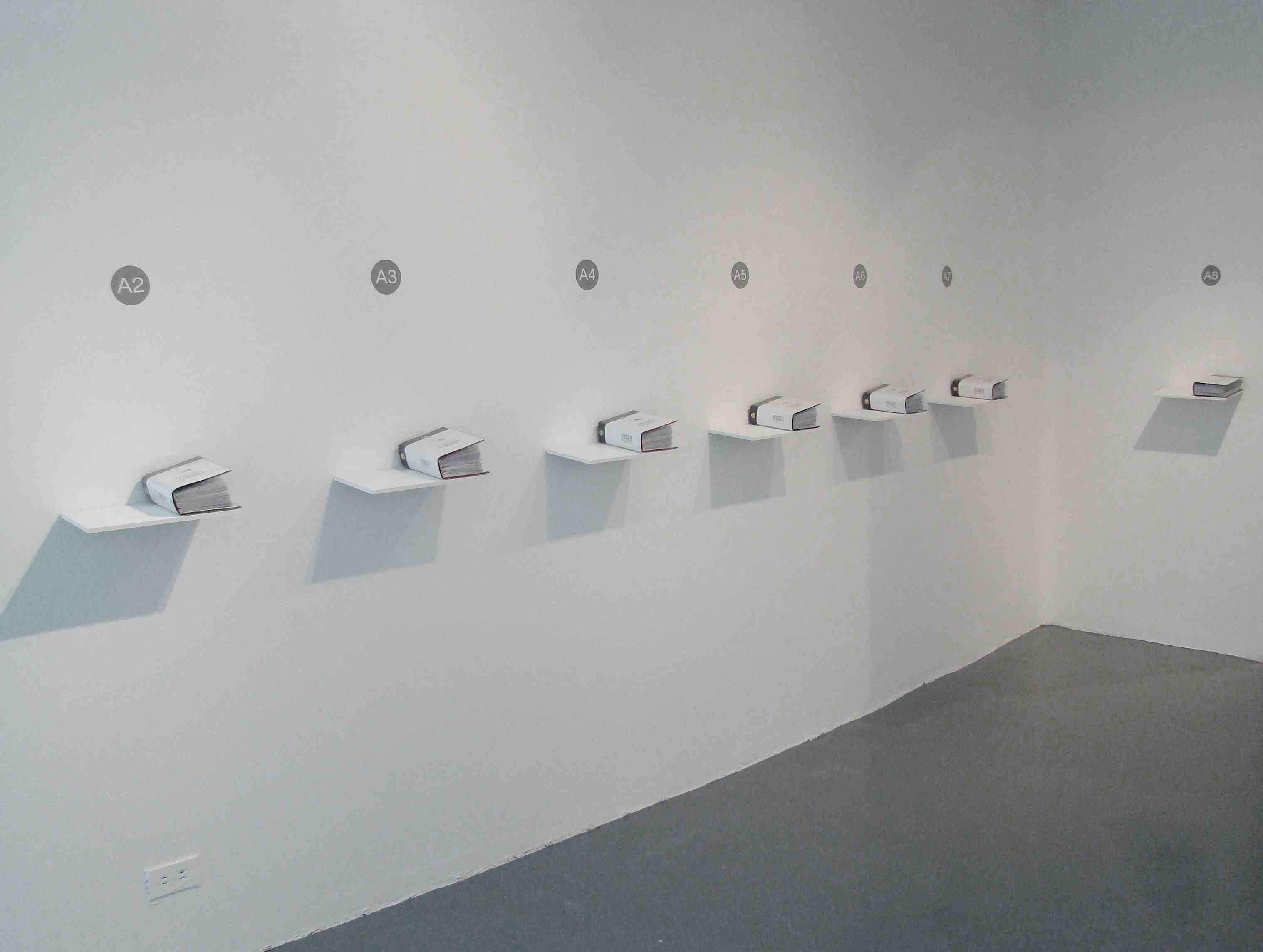
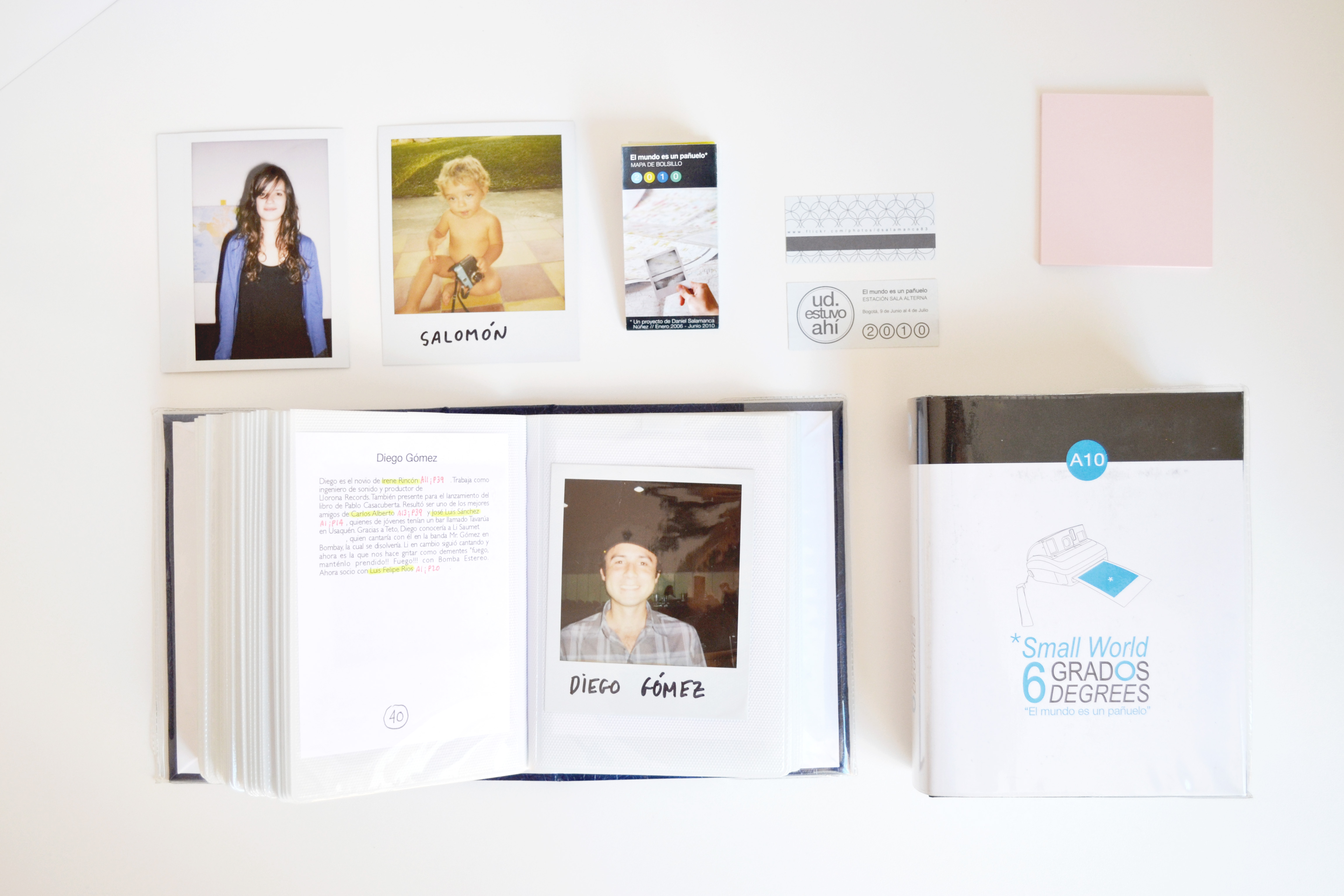


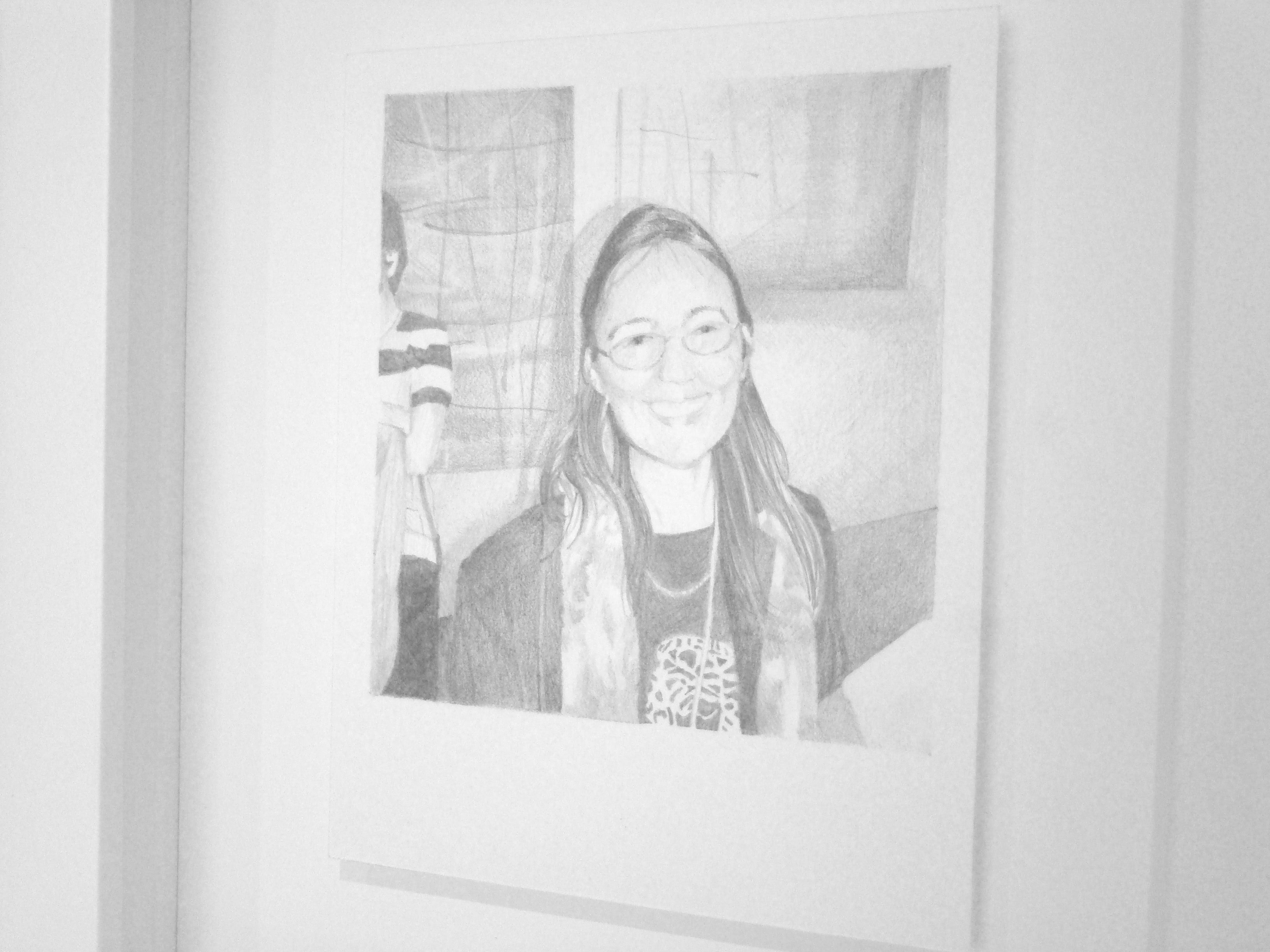

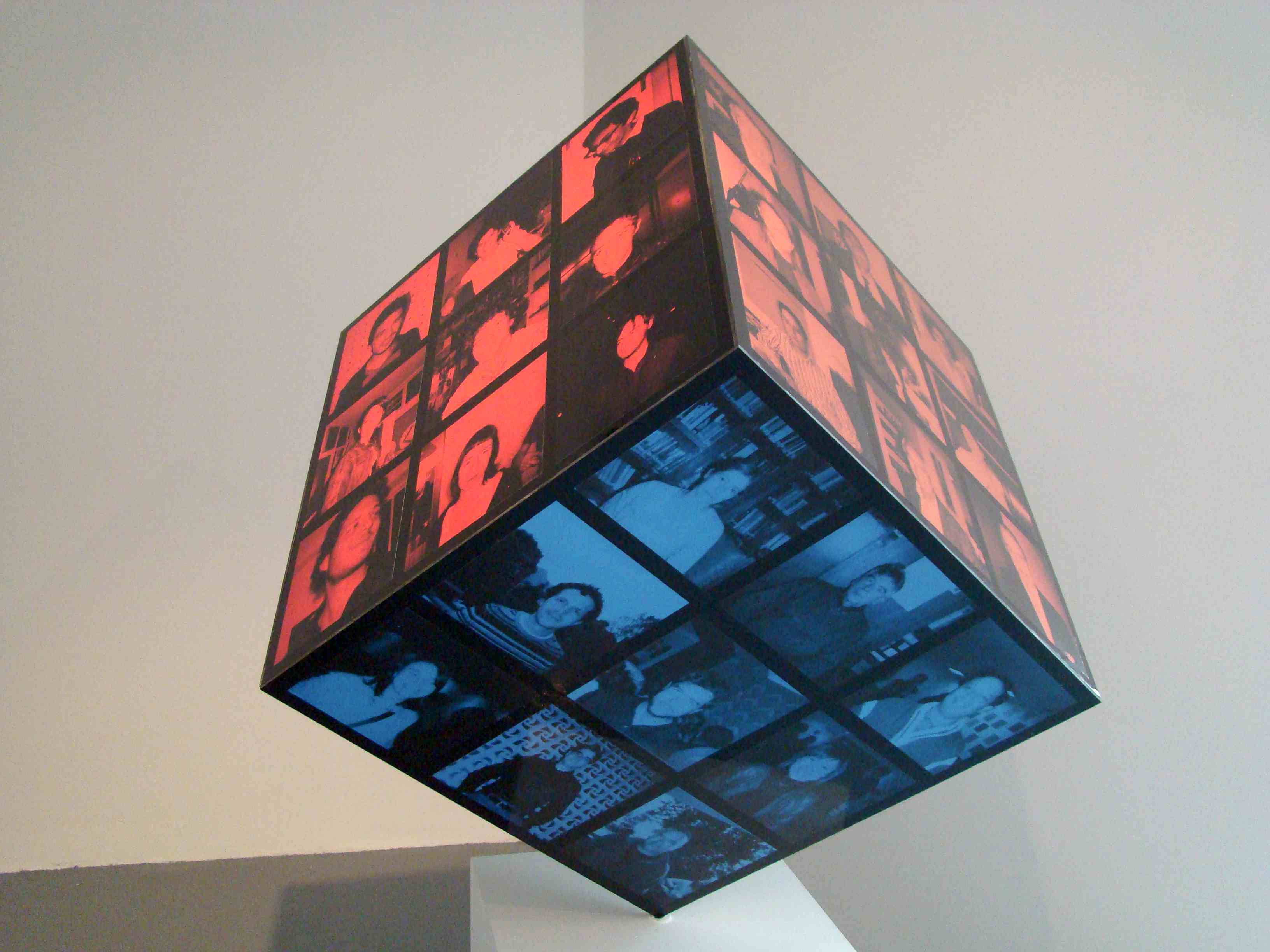
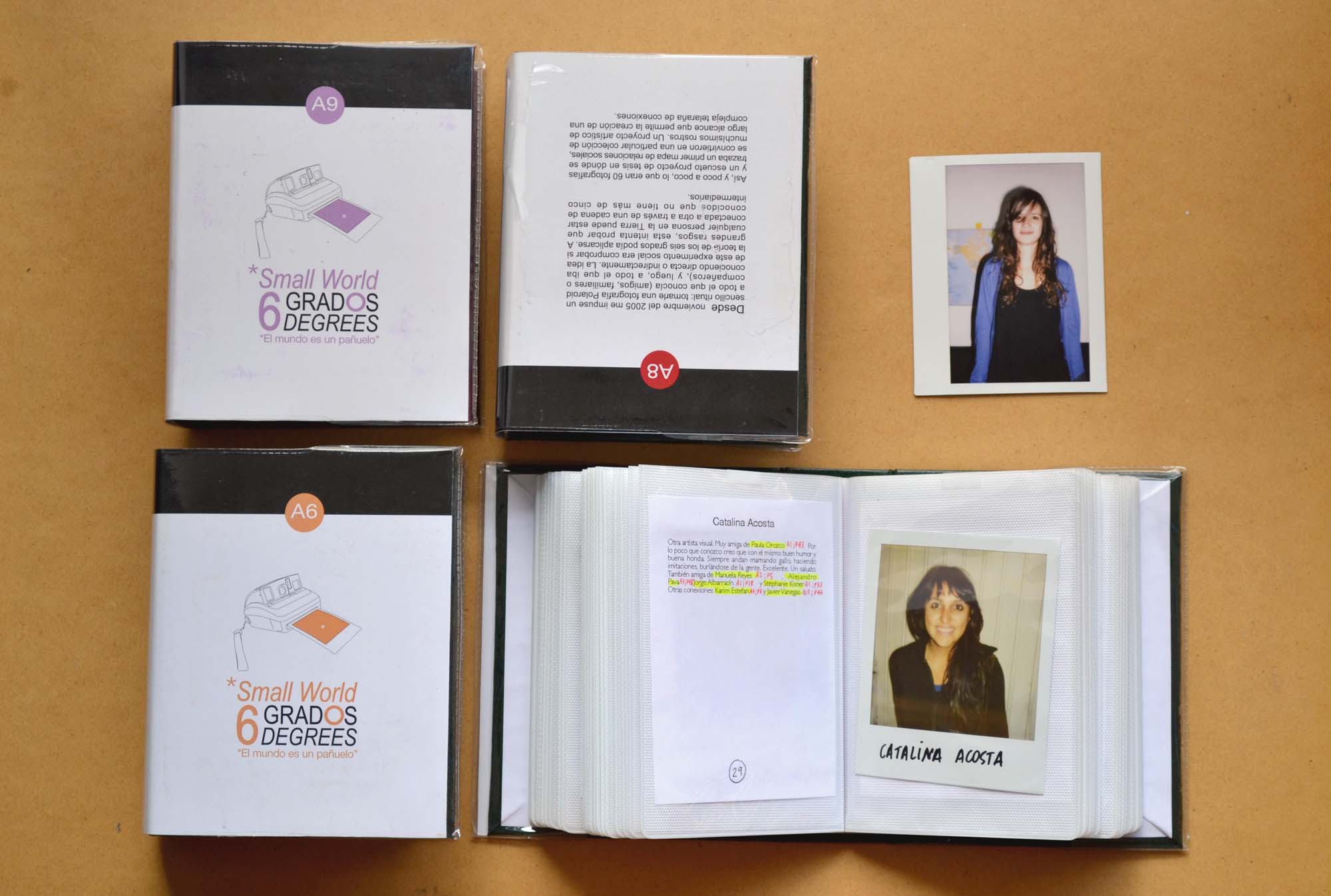


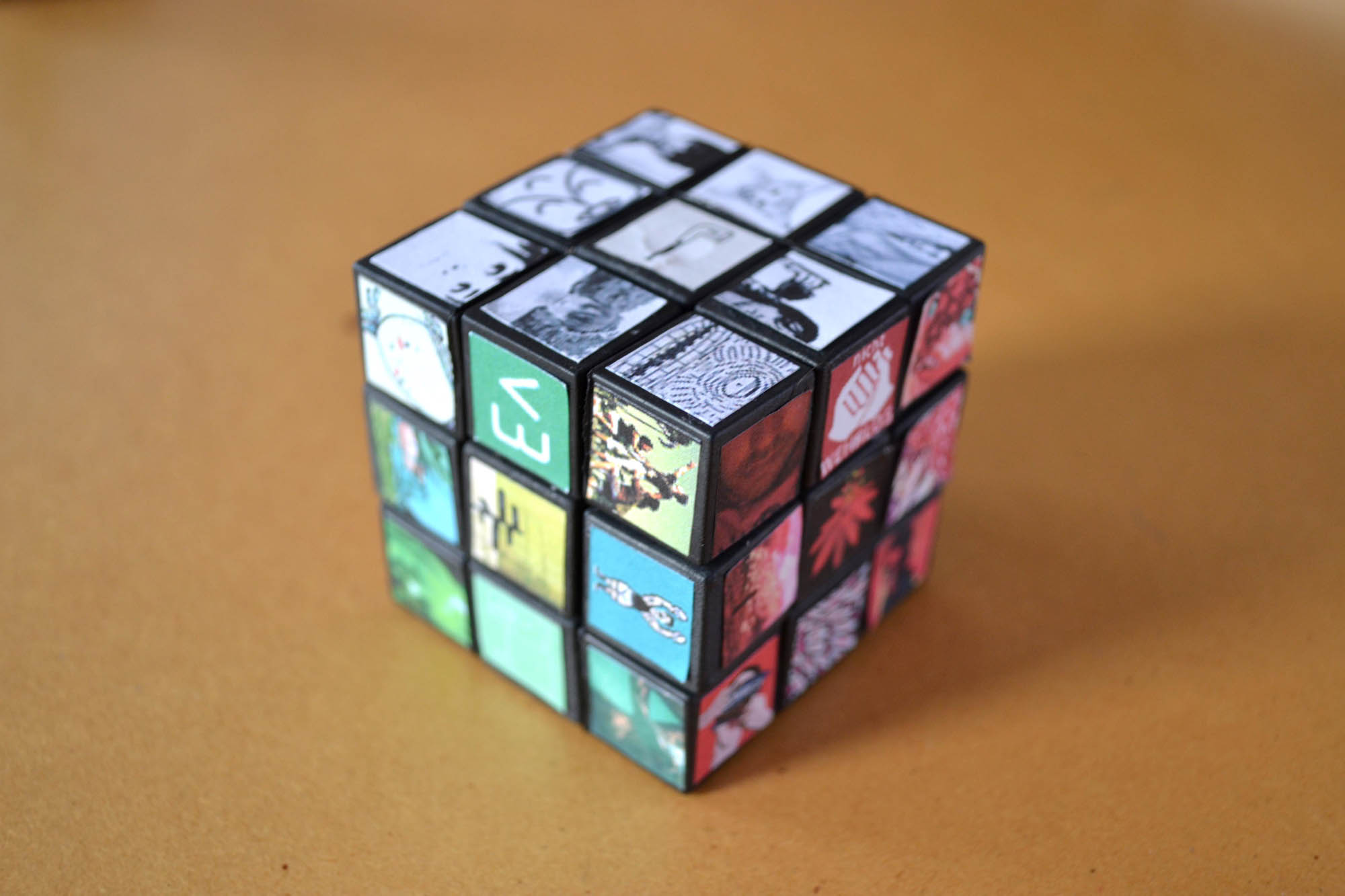
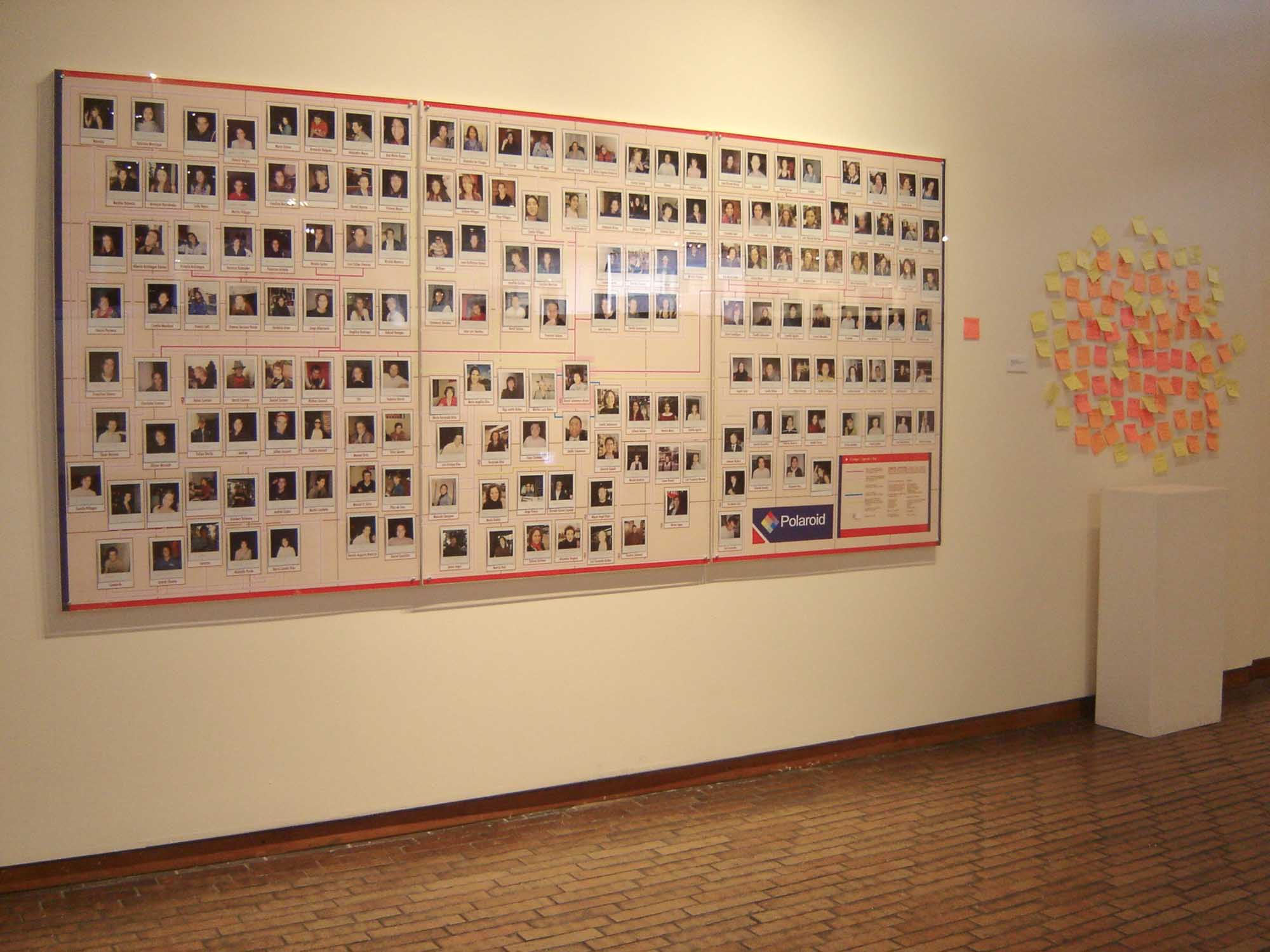
Since the beginning of 2006, I started a social ritual: taking an instant picture of everyone I knew (friends, family, or colleagues), and then, of new people I had the chance to meet in my life. The idea of this social experiment that I titled with the popular expression Small World, in Spanish El Mundo es un pañuelo, was to check if the theory of the six degrees was true. Broadly speaking, it tries to prove that any person on Earth can be connected to another through a chain of acquaintances that has no more than five intermediaries. Currently, the project consists of more than 1000 photographs, several versions of maps both in paper and in an atlas, and 20 albums with the original pictures and anecdotic texts that connect different people. I also did a series of 54 paintings and drawings that, together with a giant Rubik's cube, represent a part of the Colombian art scene as well as other Works depicting social divisions in my home country.
> Full Pictures soon
Artbo, Referentes
> Full Pictures soon
Artbo, Referentes


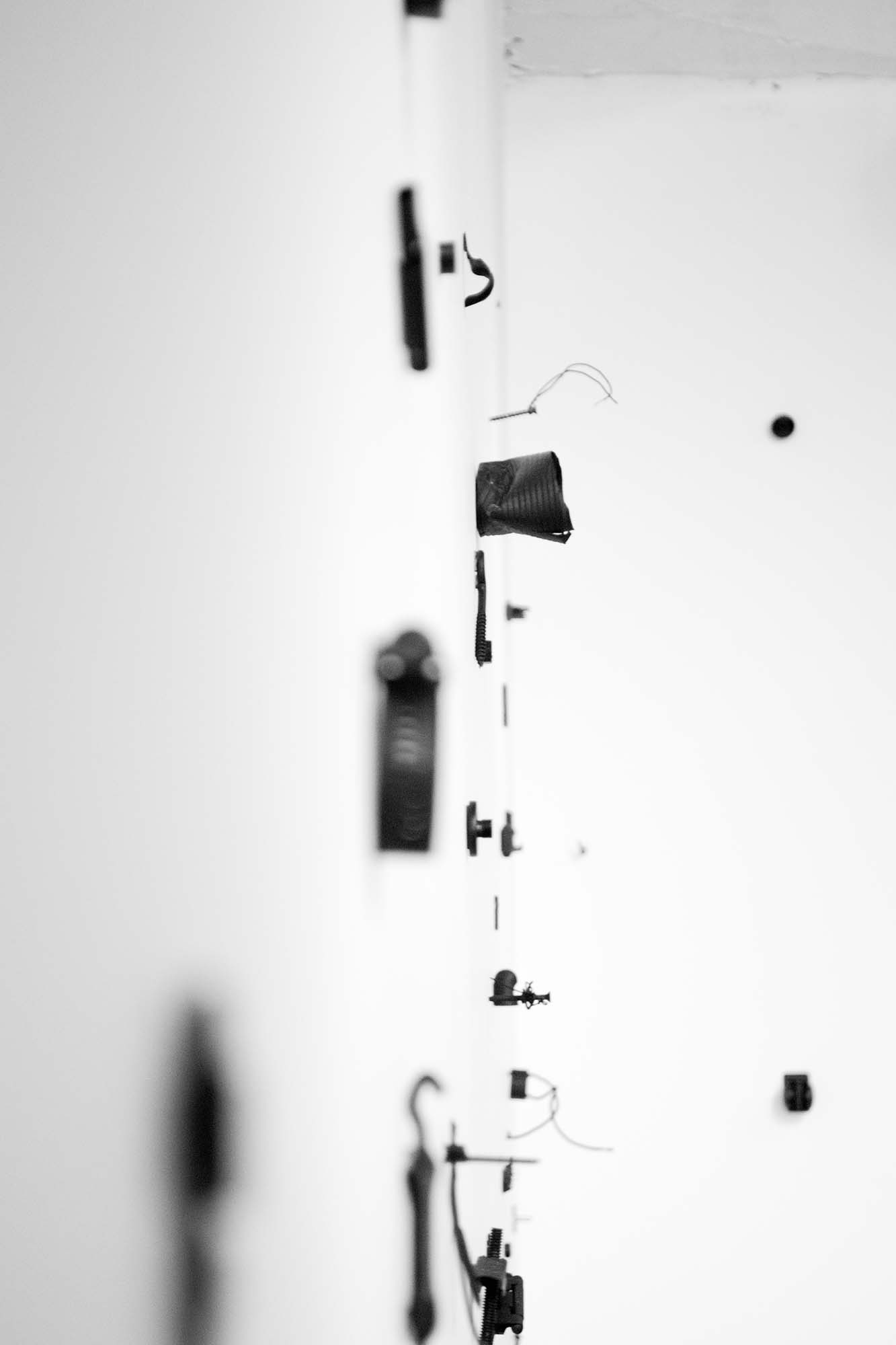

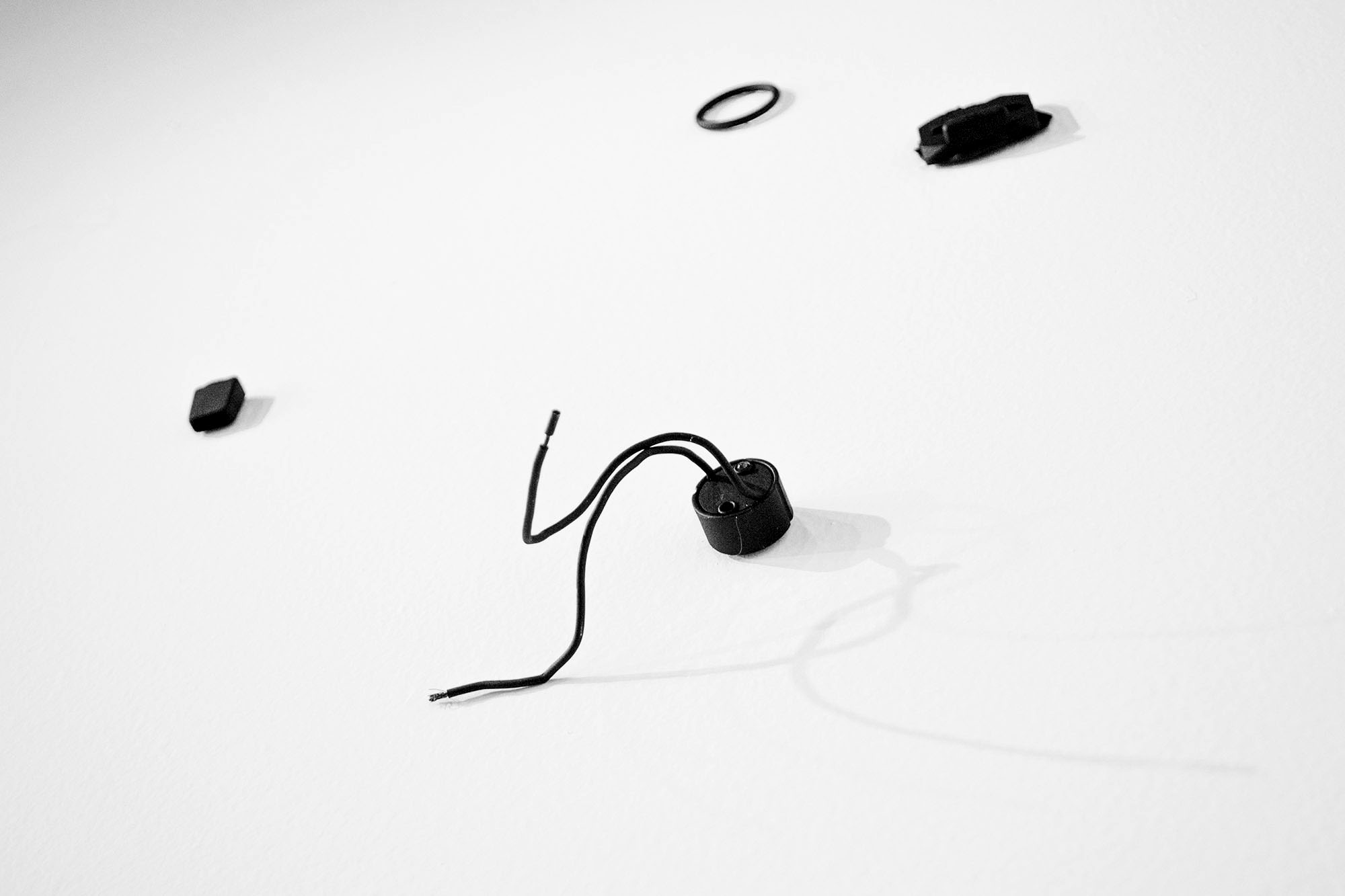

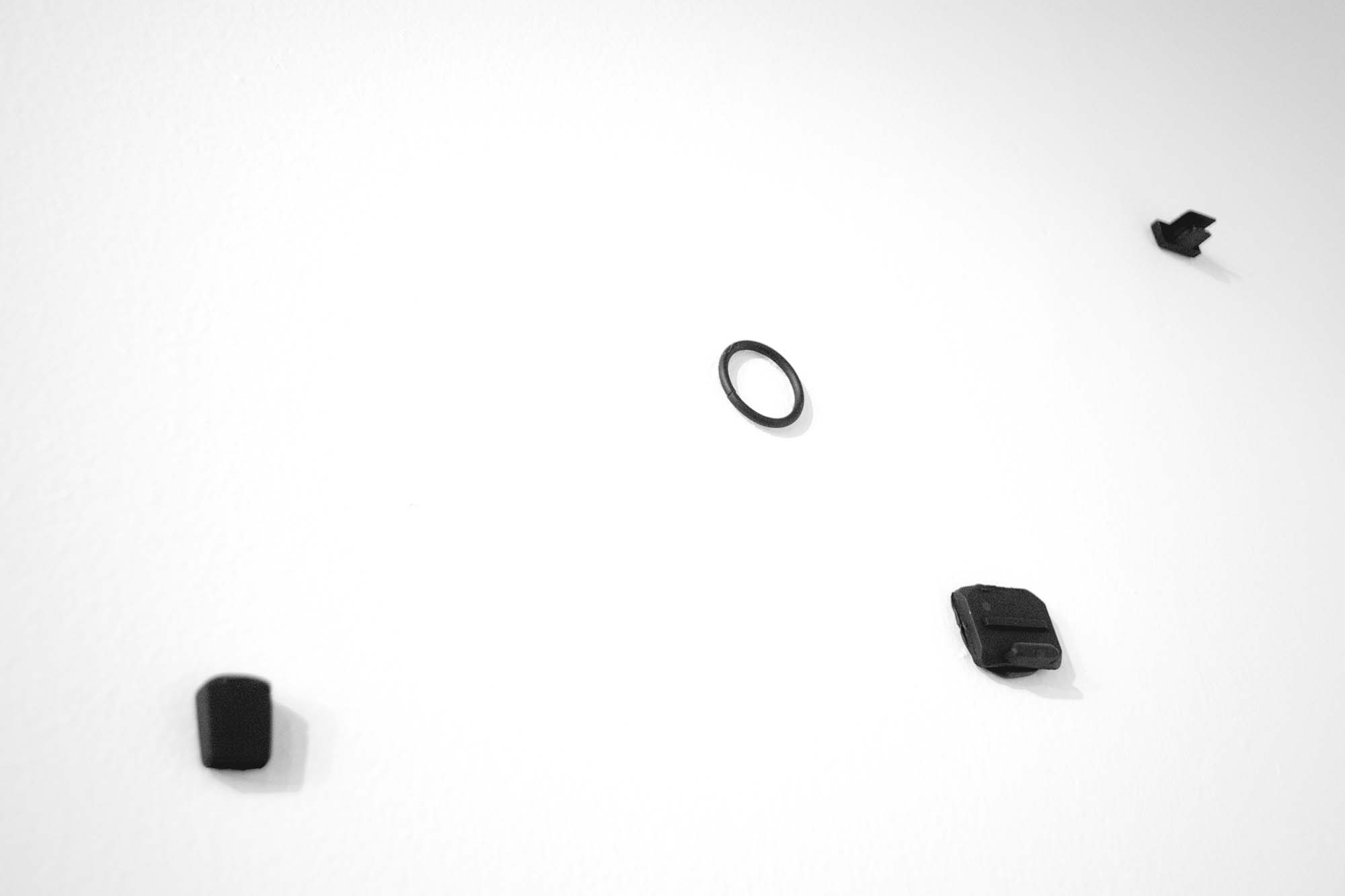
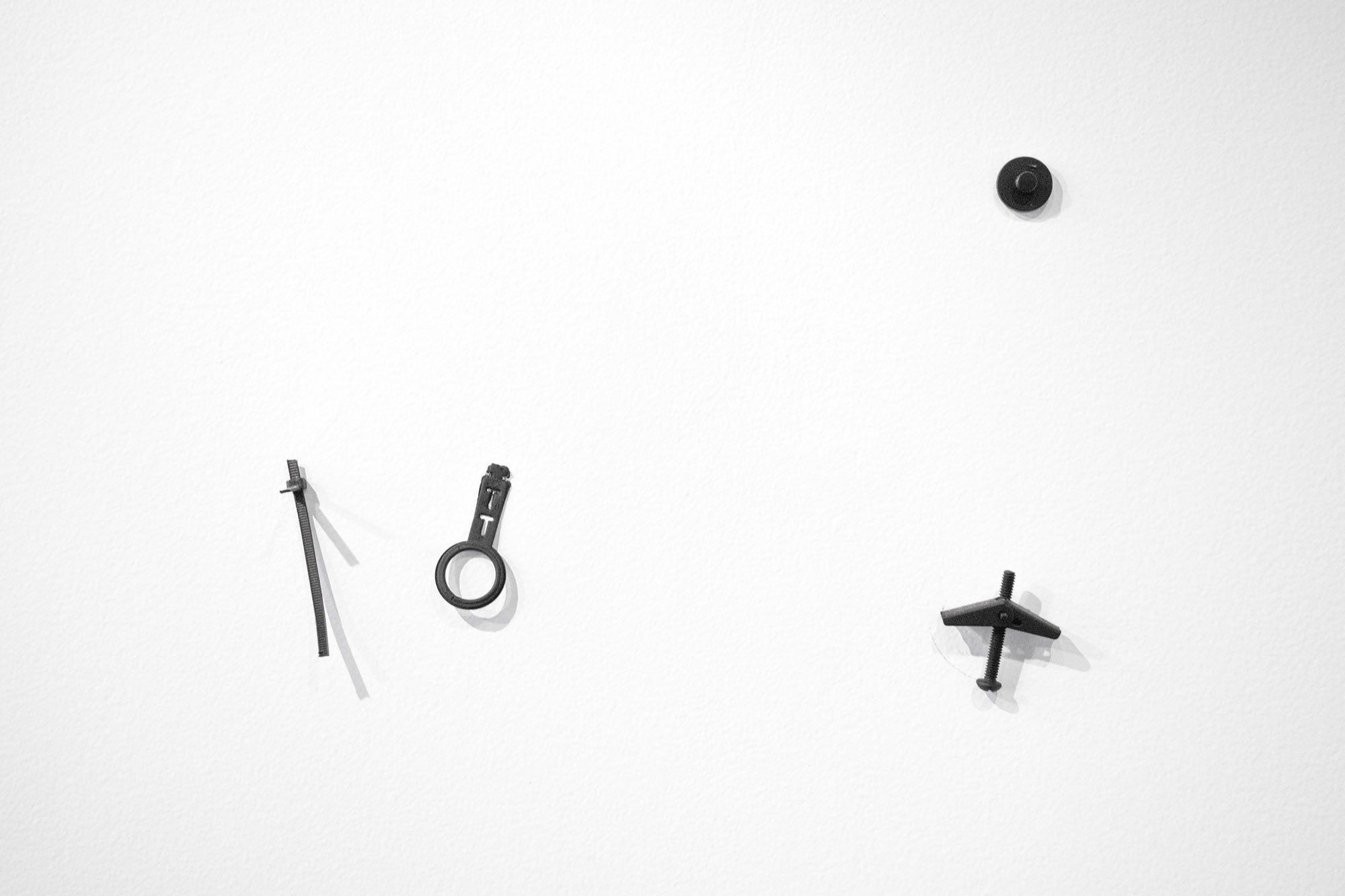
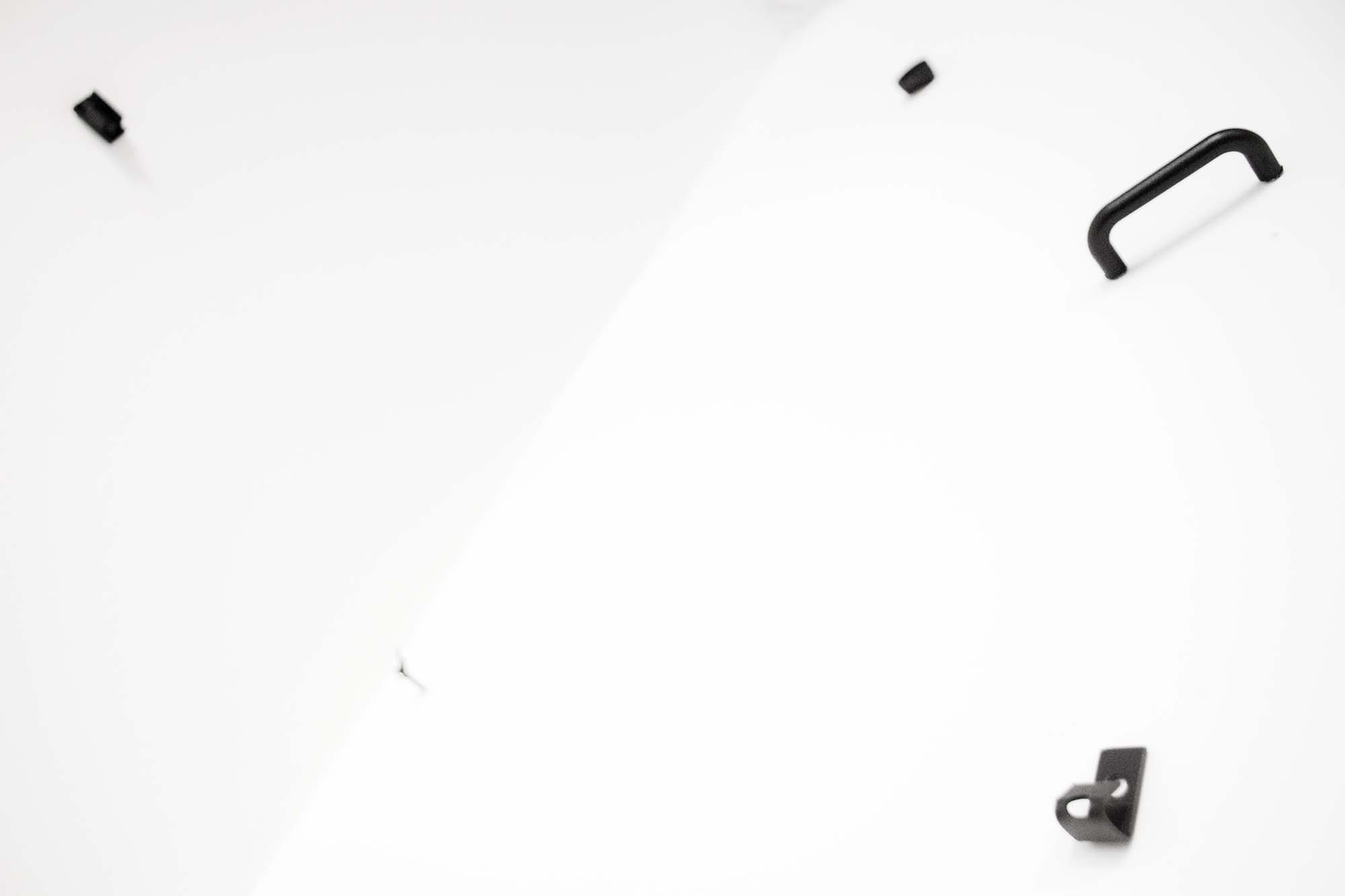
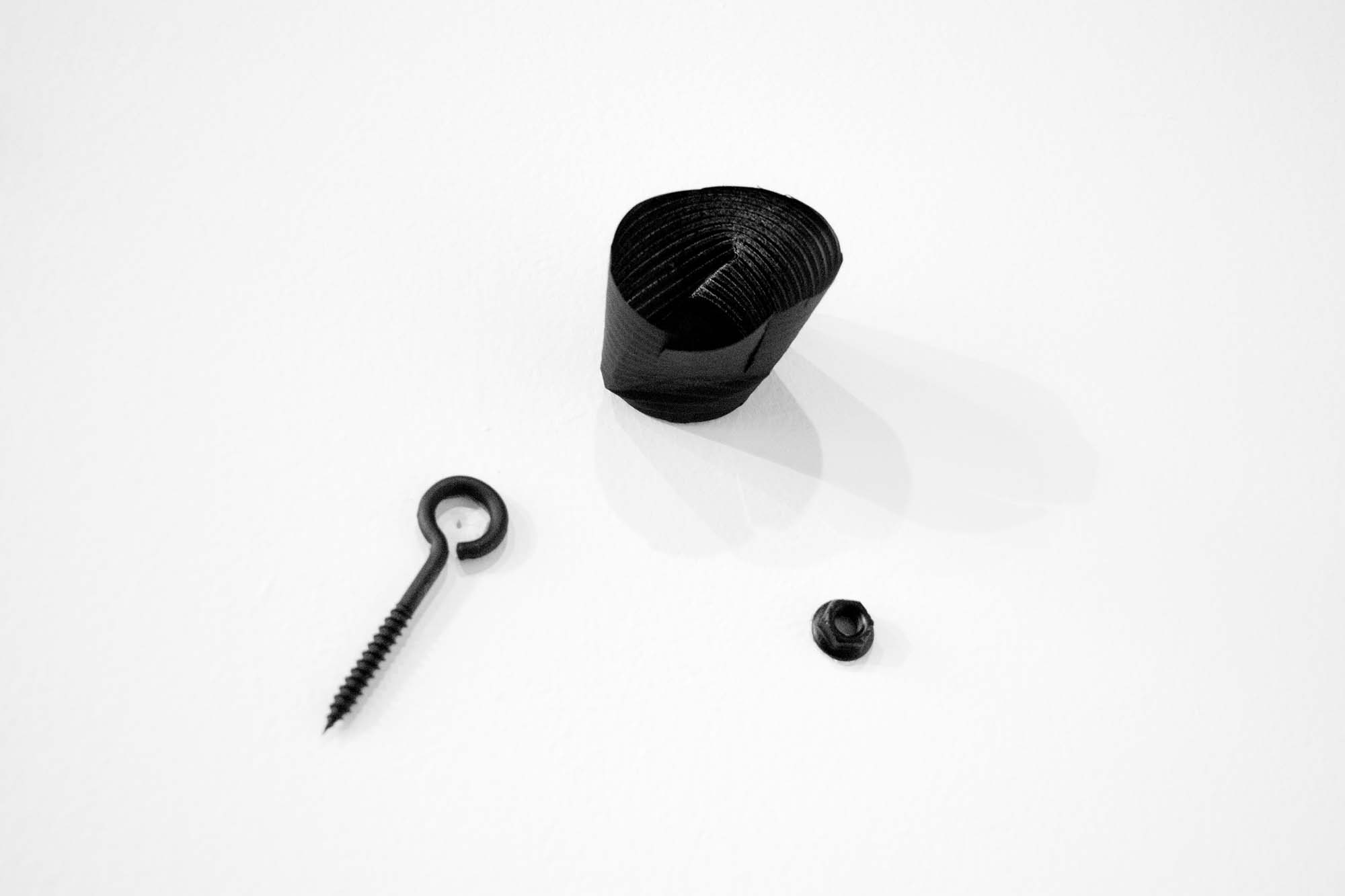
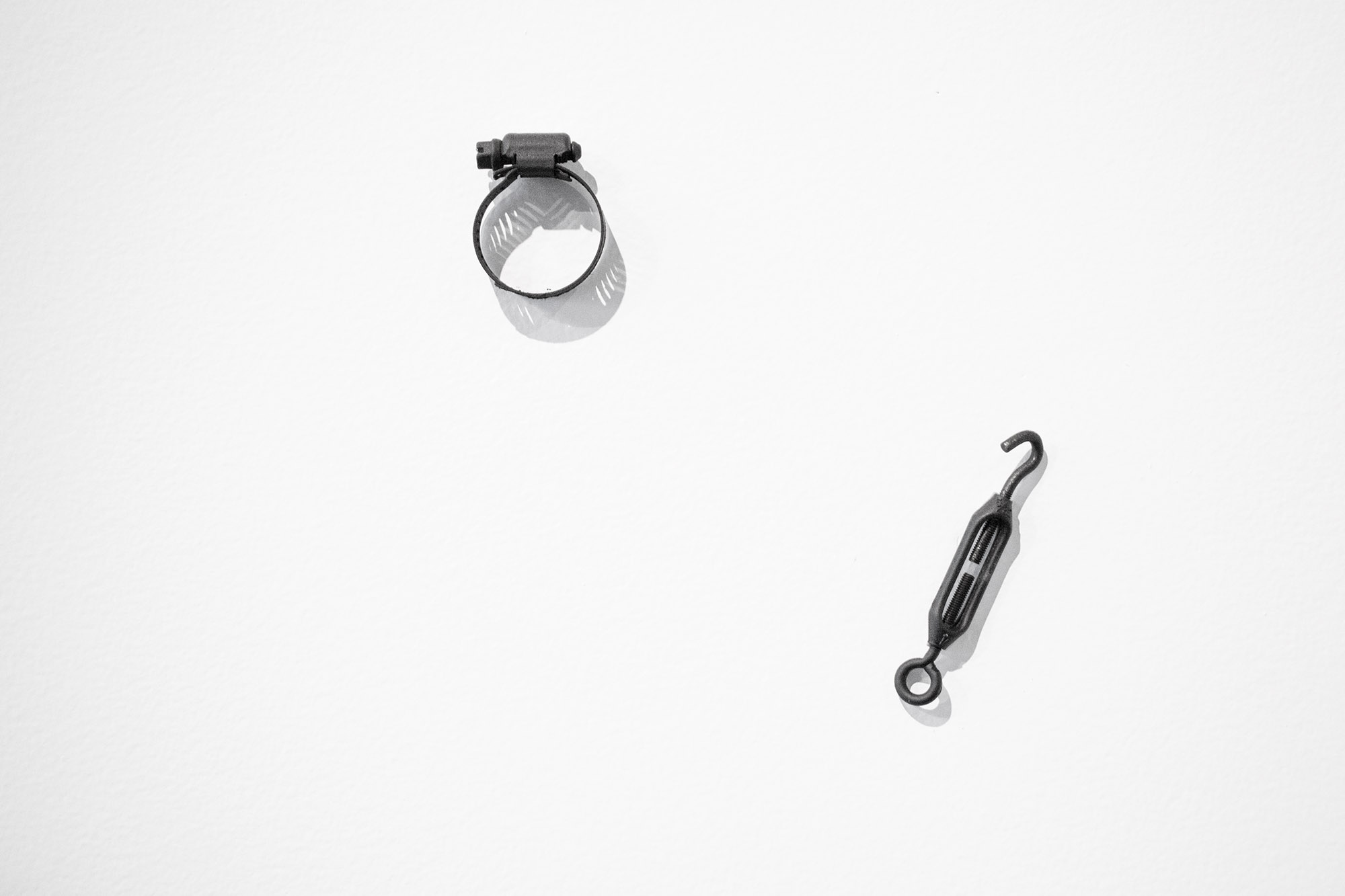
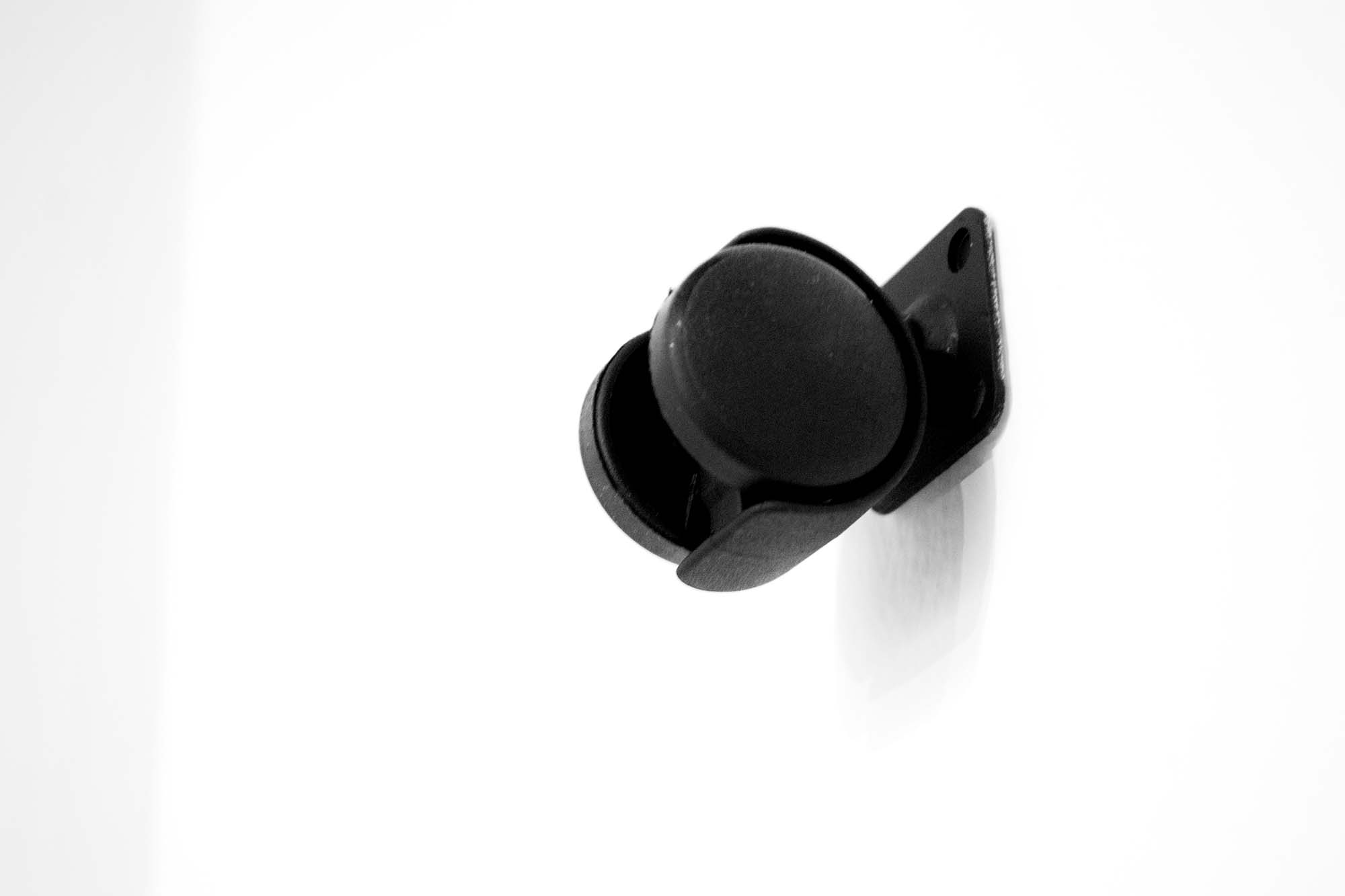

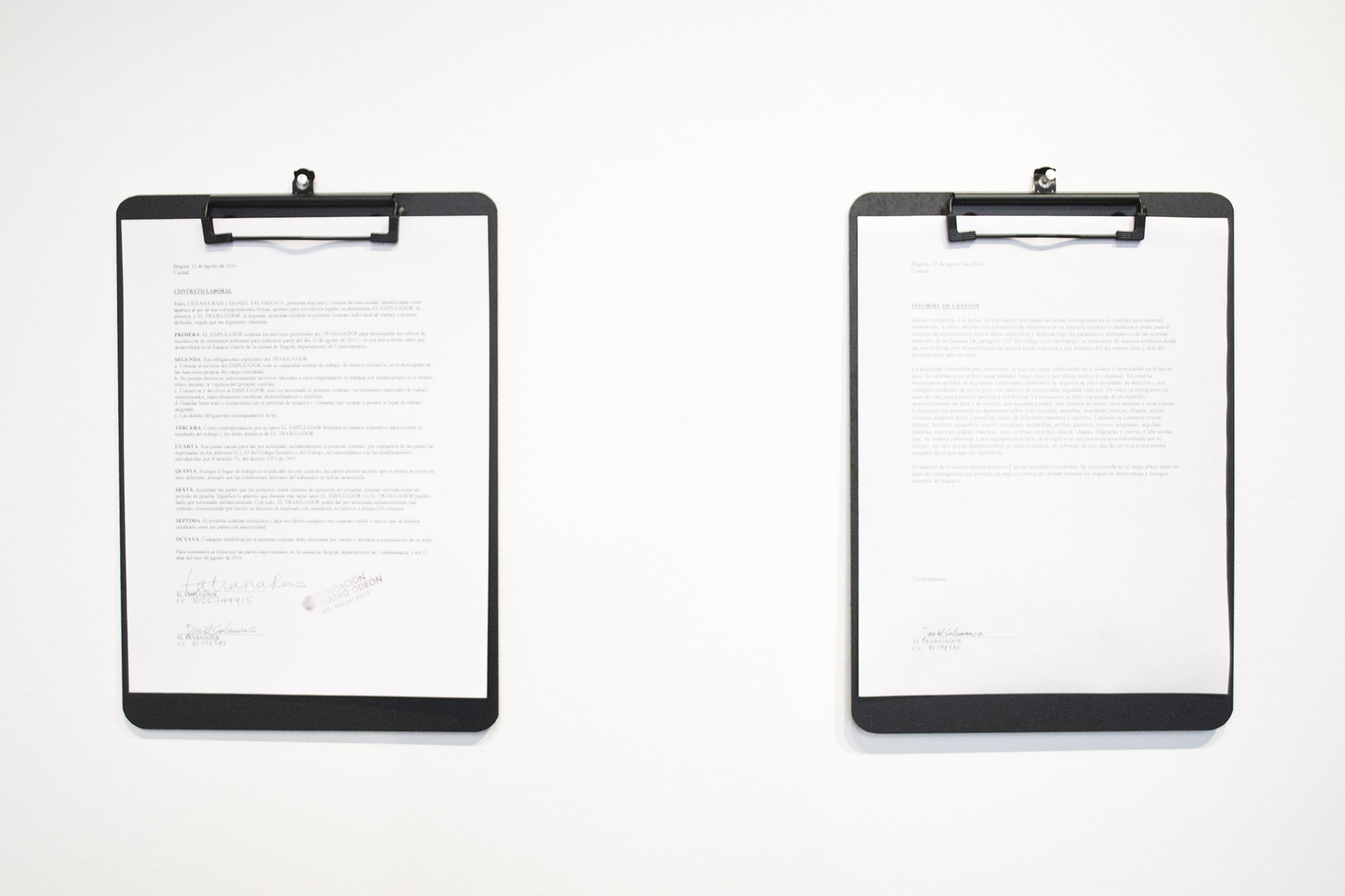
Based on the poem by Charles Bukowsky Air and light and time and space, referring to the unavoidable task of creating regardless of the artist’s personal situation, this work relates to a fictional character (an artist) hired to collect all the old mounting elements from a cultural space (Odeón). The results of his labor are 100 little objects painted in black and a management report. The piece offers an ironic perspective on the professional situation of an artist who doesn’t belong to the traditional labor system and has to manage and control his own free time with tasks that seem ridiculous to other people.
Un lugar y el tiempo, group exhibition, Espacio Odeón
Un lugar y el tiempo, group exhibition, Espacio Odeón


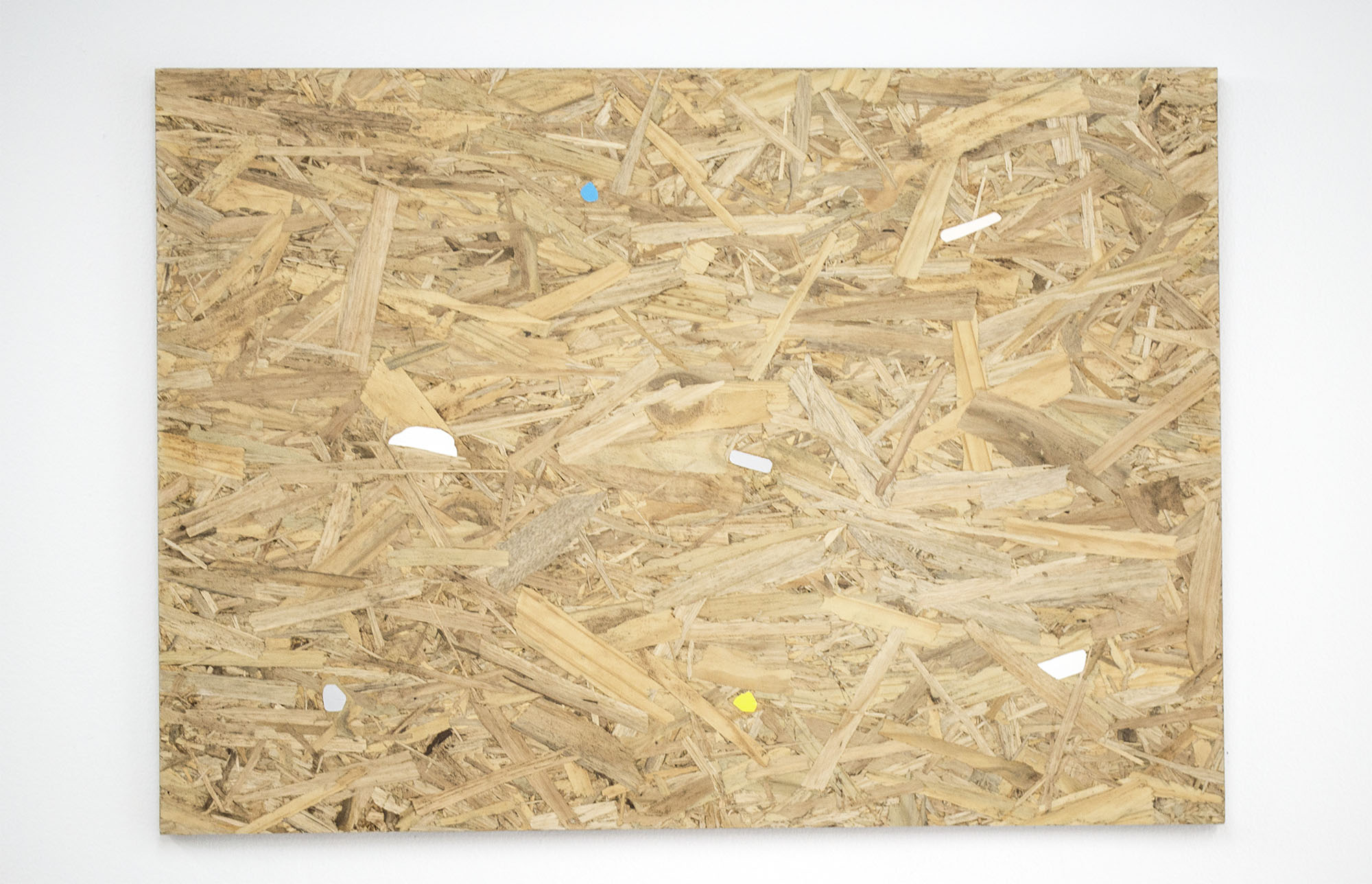
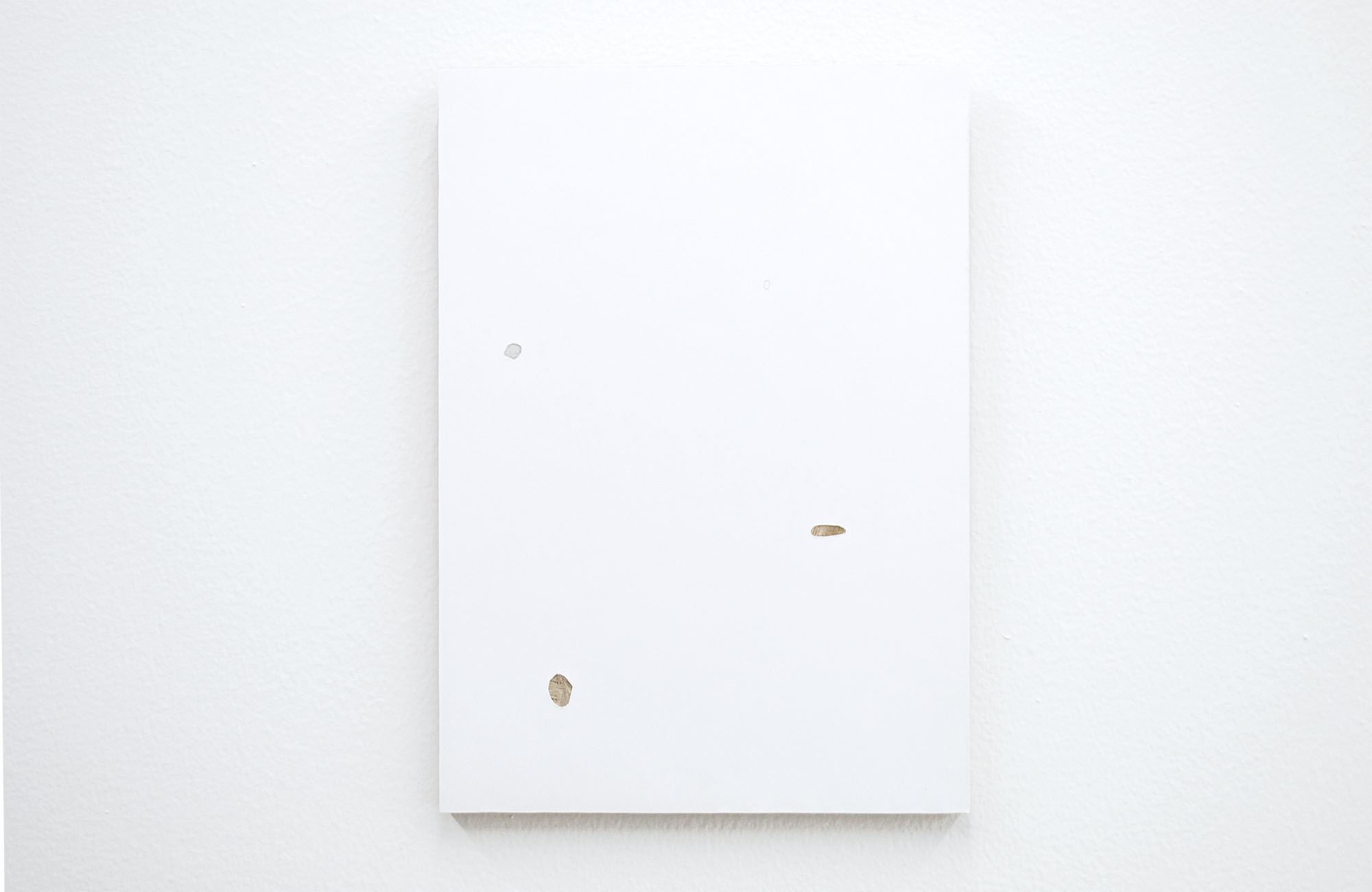










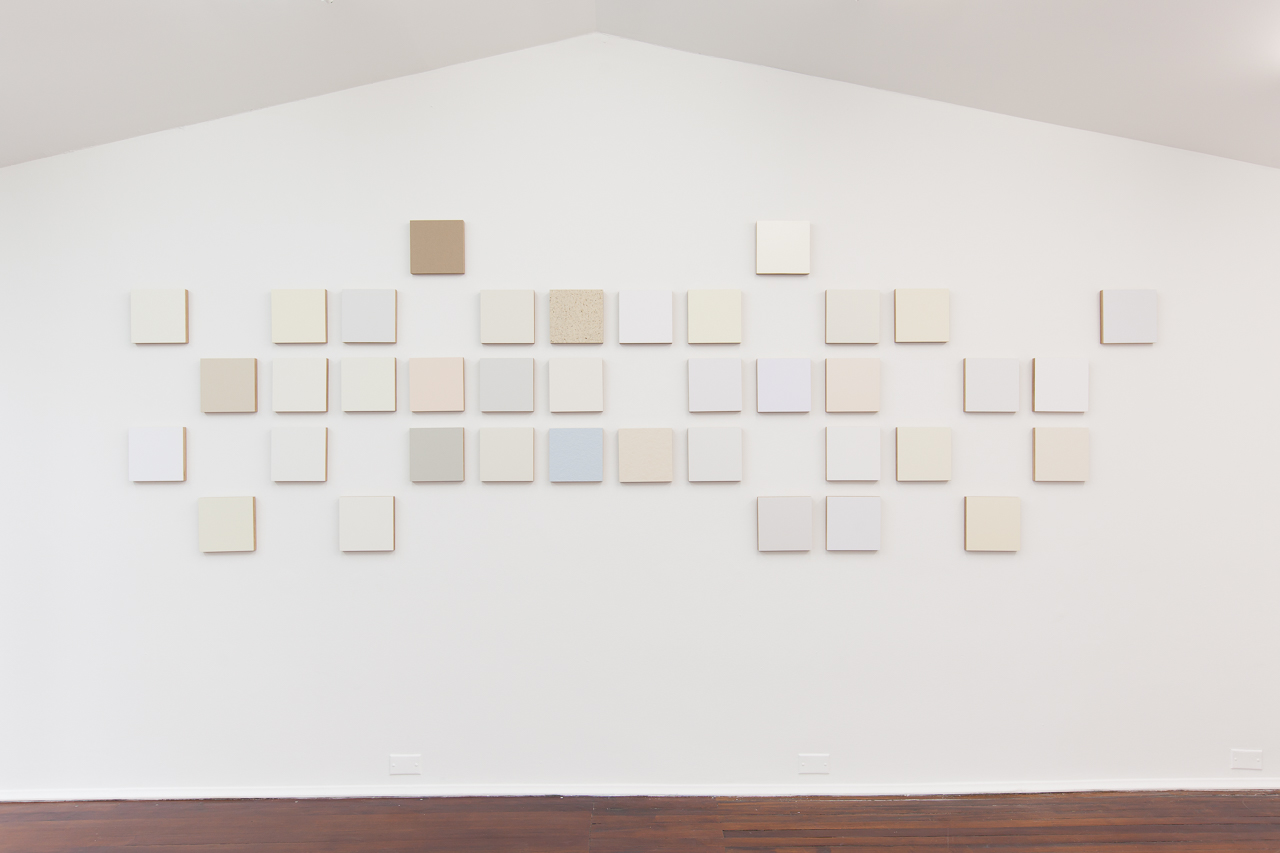





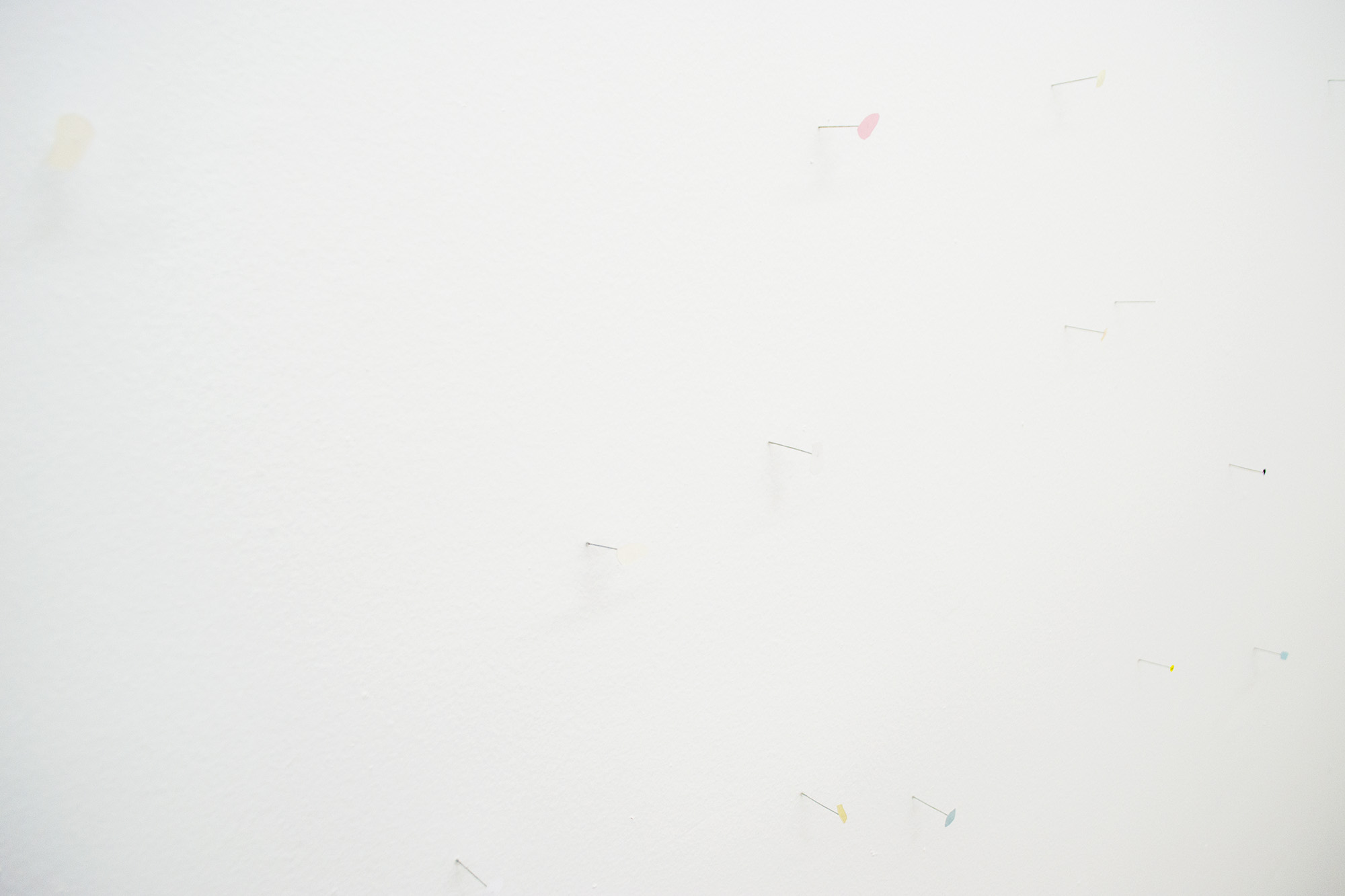

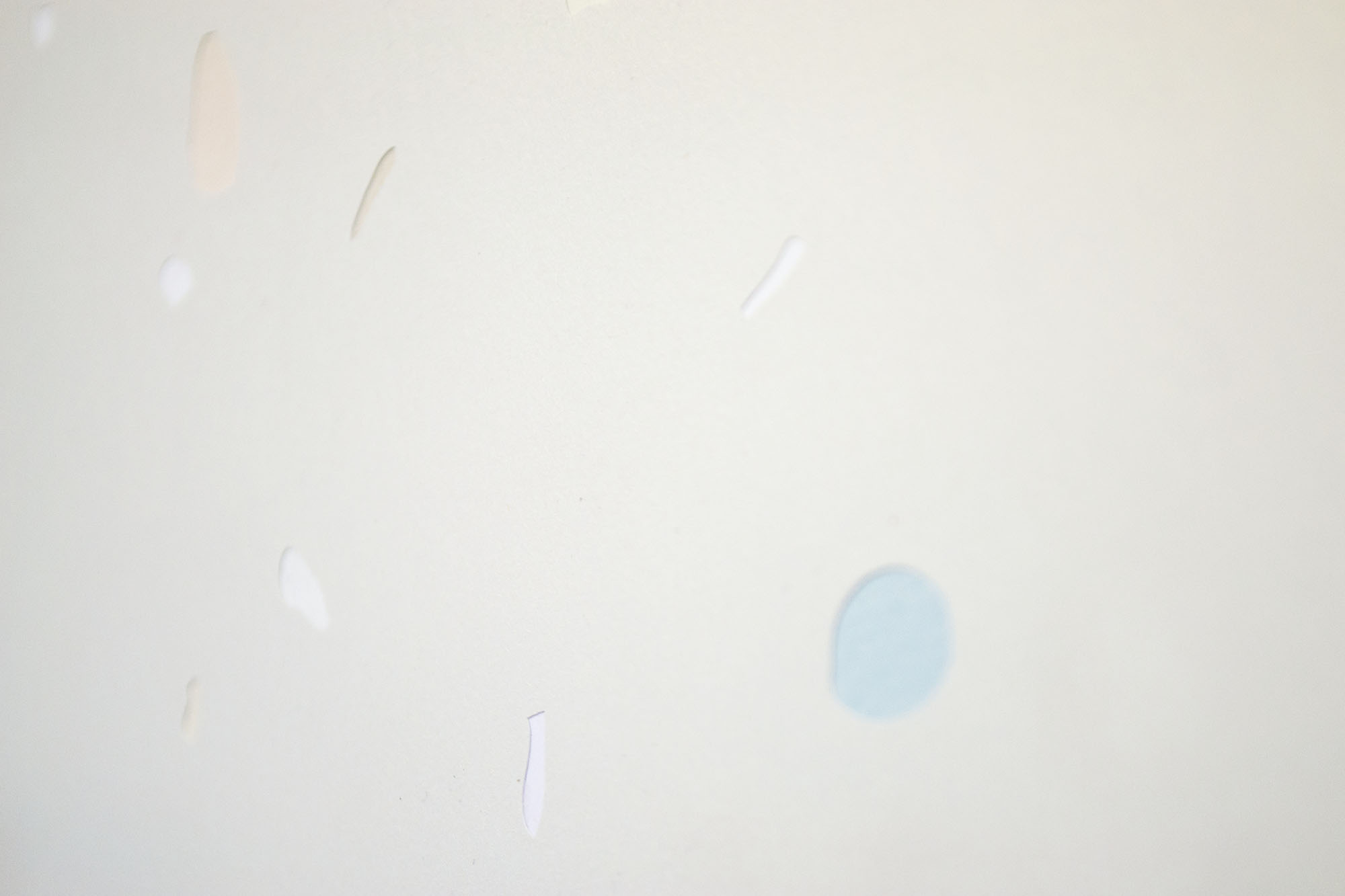

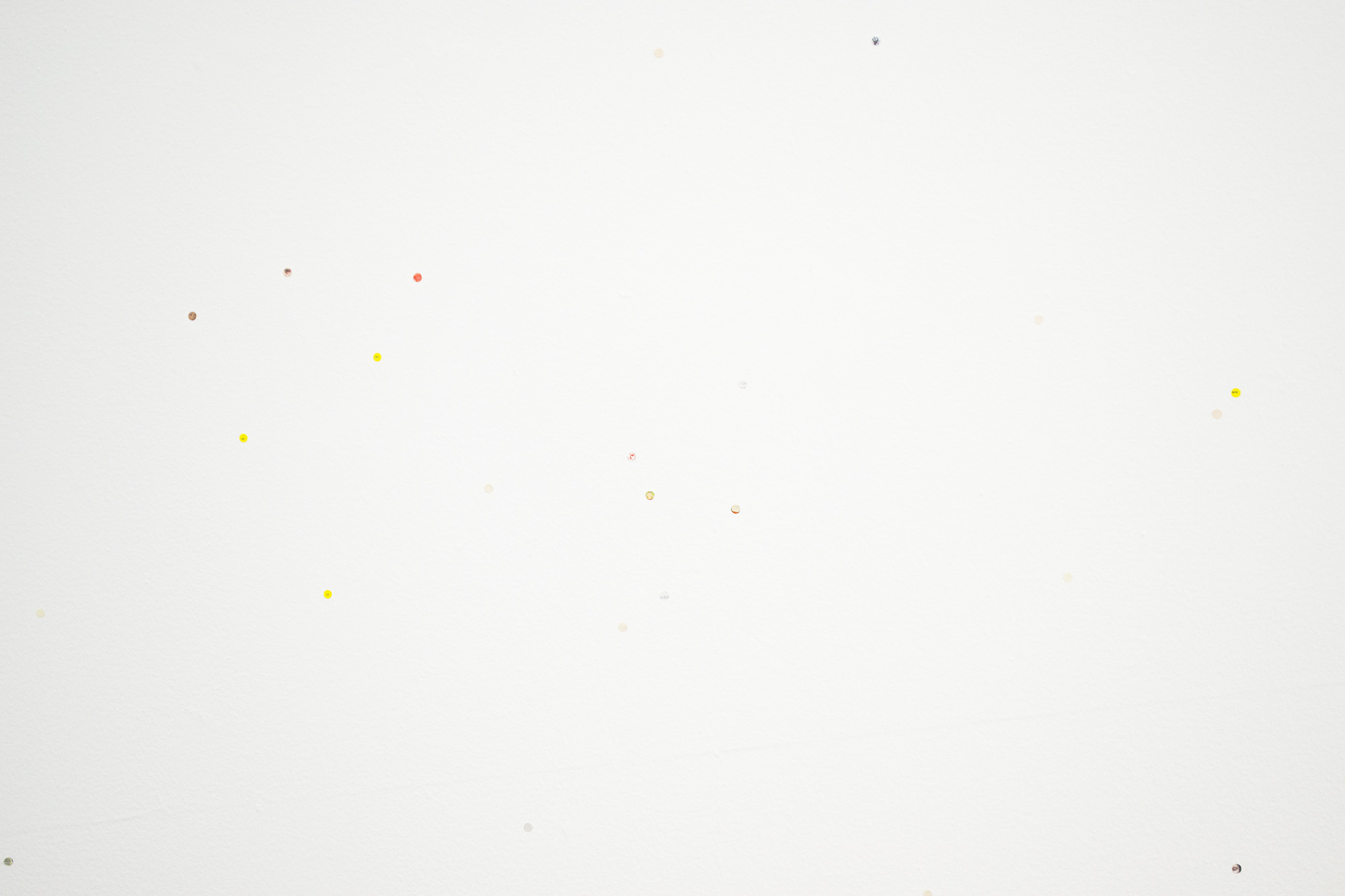
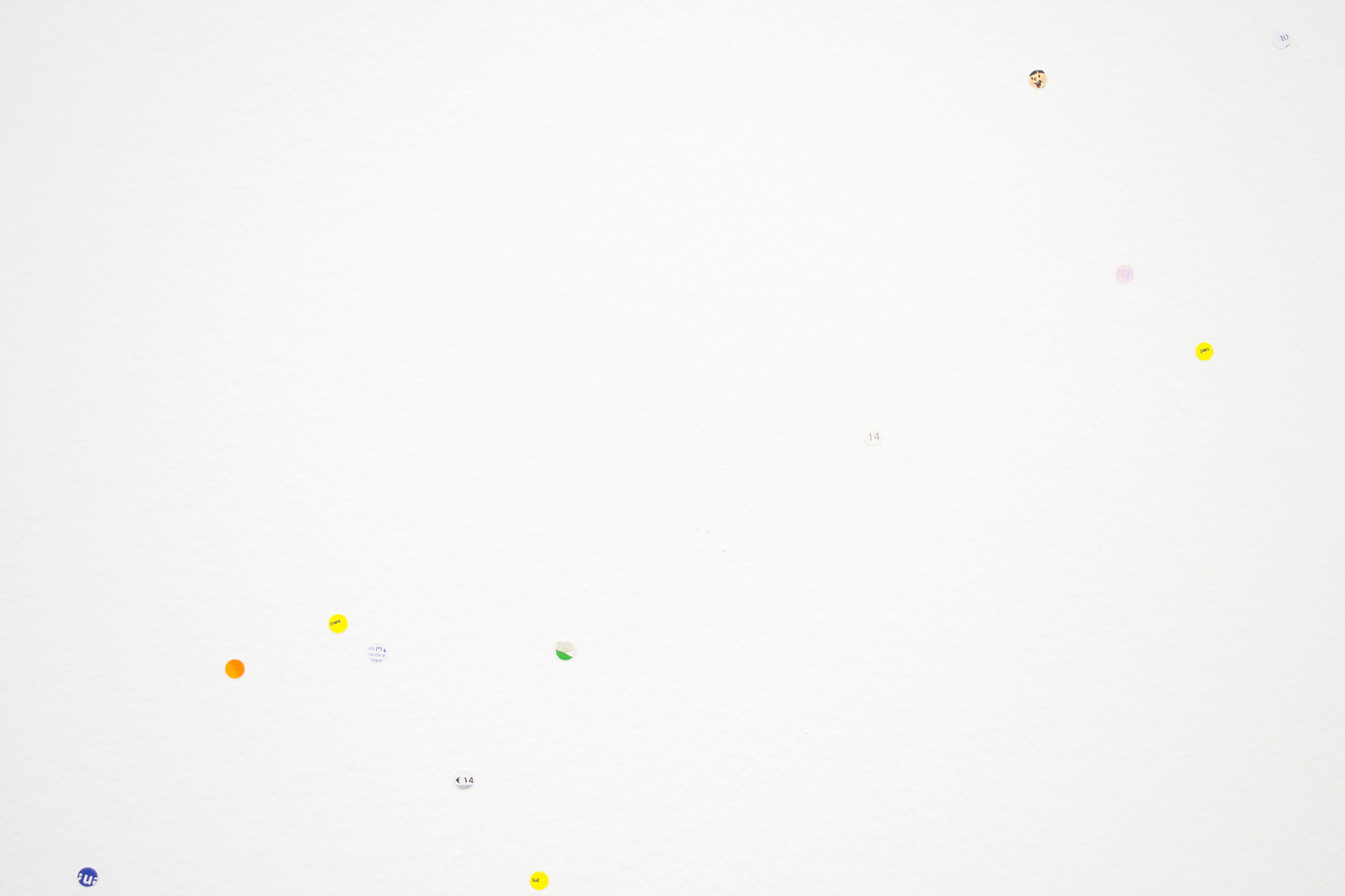
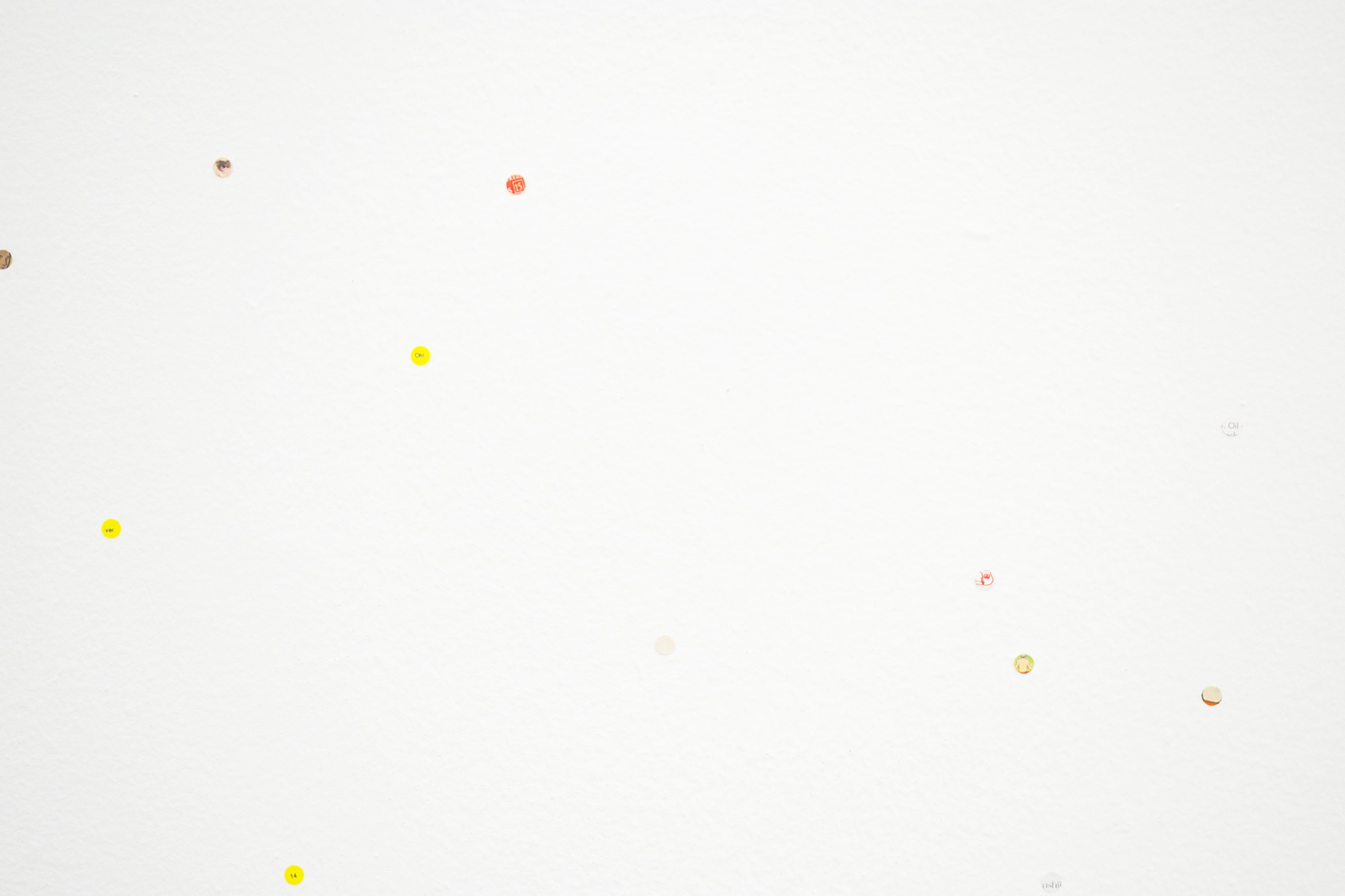
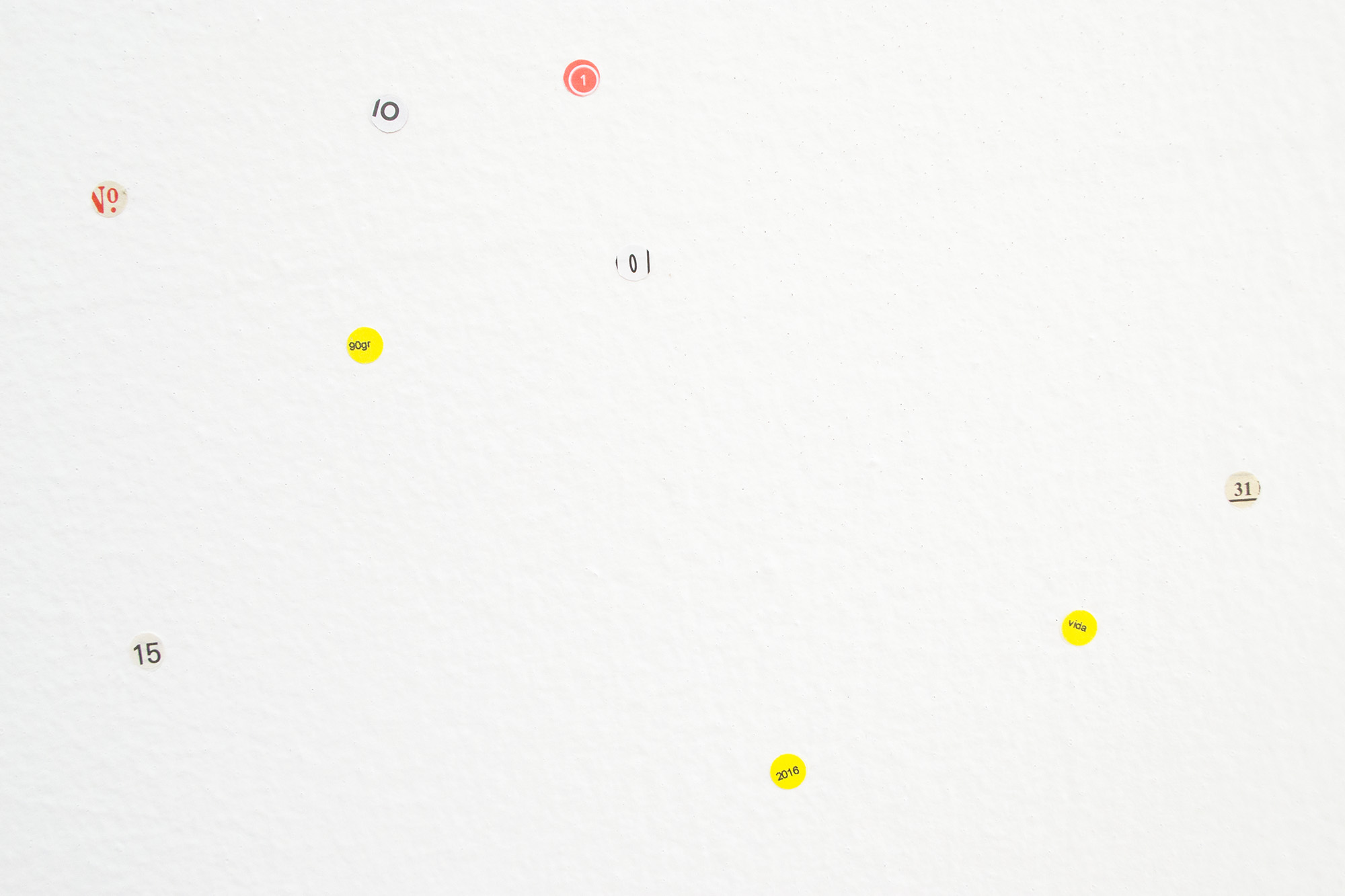

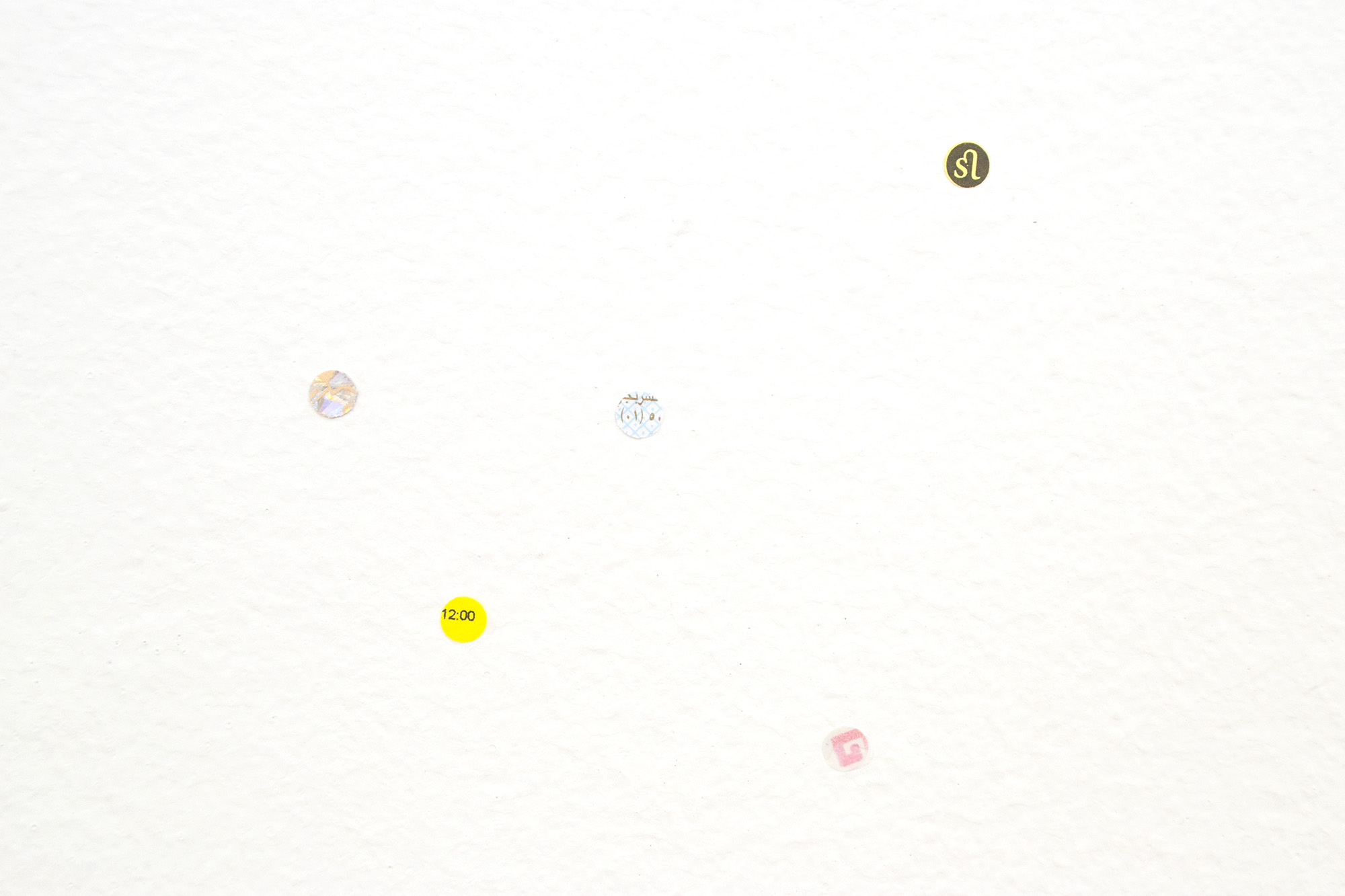
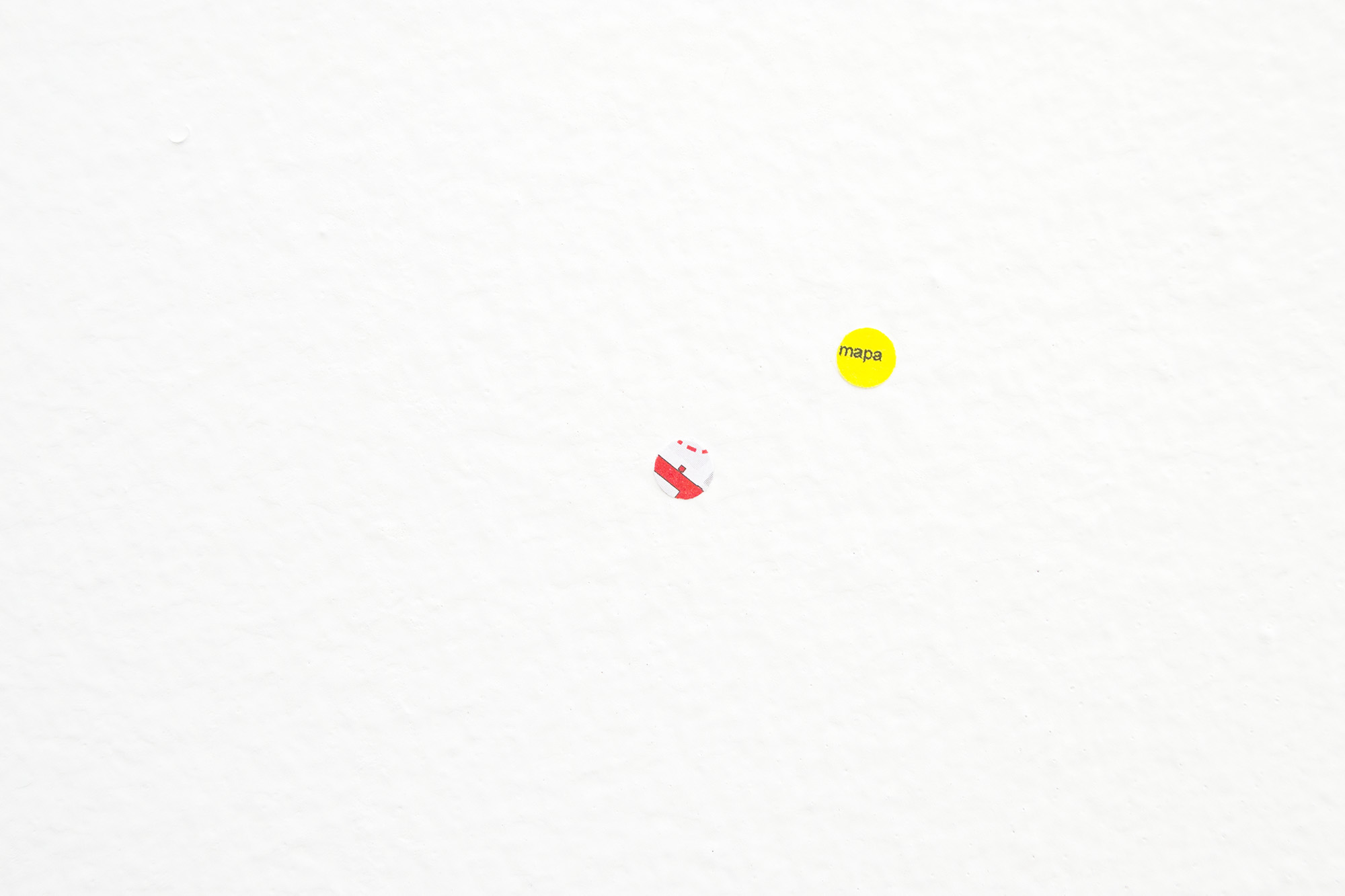
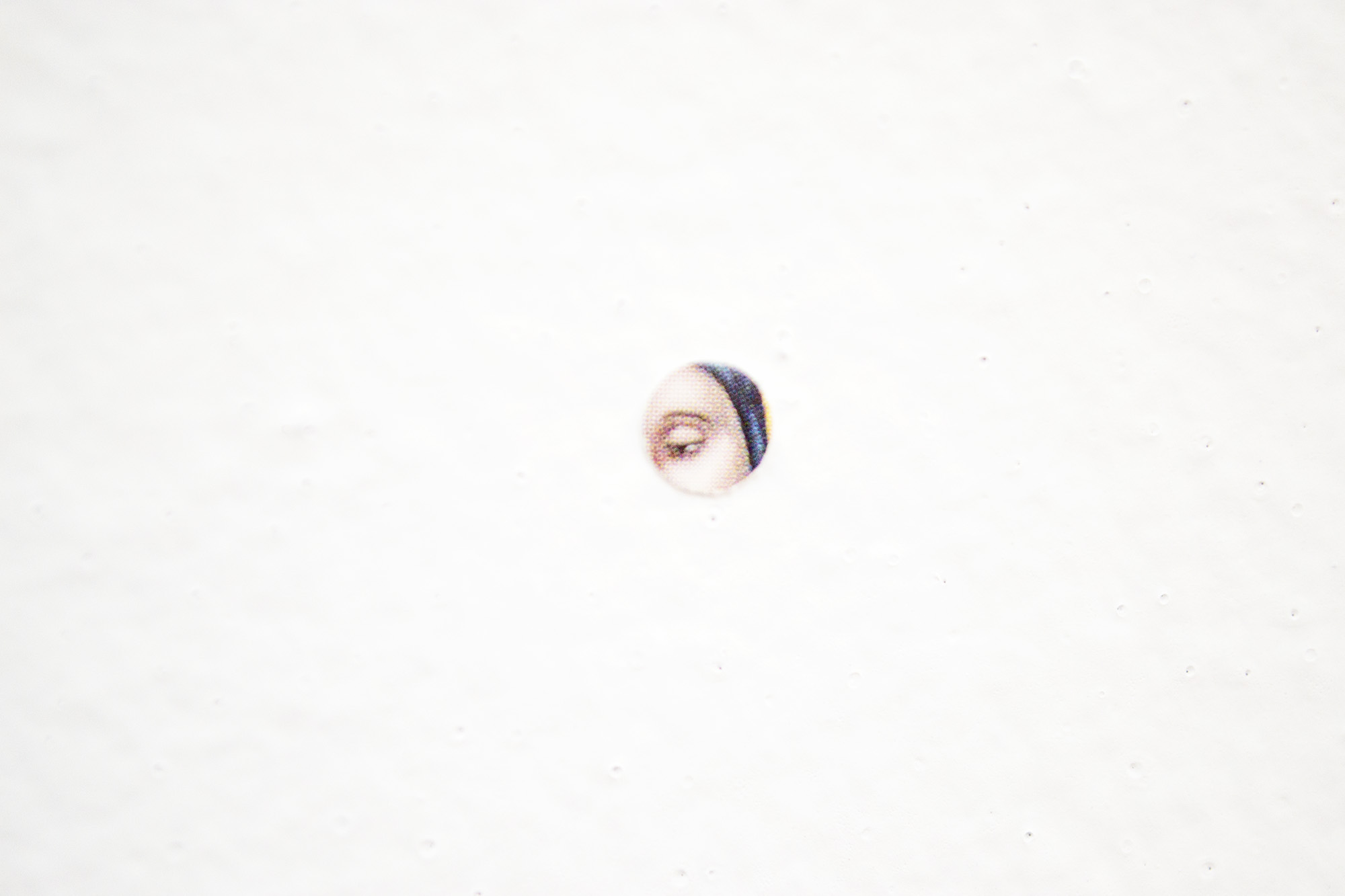


This project takes a close look at the imperfections and minuscule grain texture spots found on 90g sheets of recycled paper. Then I imagine that those little dots came from previously discarded print material such as a ticket, a medicine box, a magazine, a letter, a paper package, a postcard, etc. And then, that those elements were part of the life of different characters, creating a narrative circle connected through paper. The 3 floors exhibition comments on artisanal methods of paper production, standardized sizing processes, cyclical and repetitive narratives, and the continuous transformation of matter.
Solo exhibition at Sketch gallery
Solo exhibition at Sketch gallery
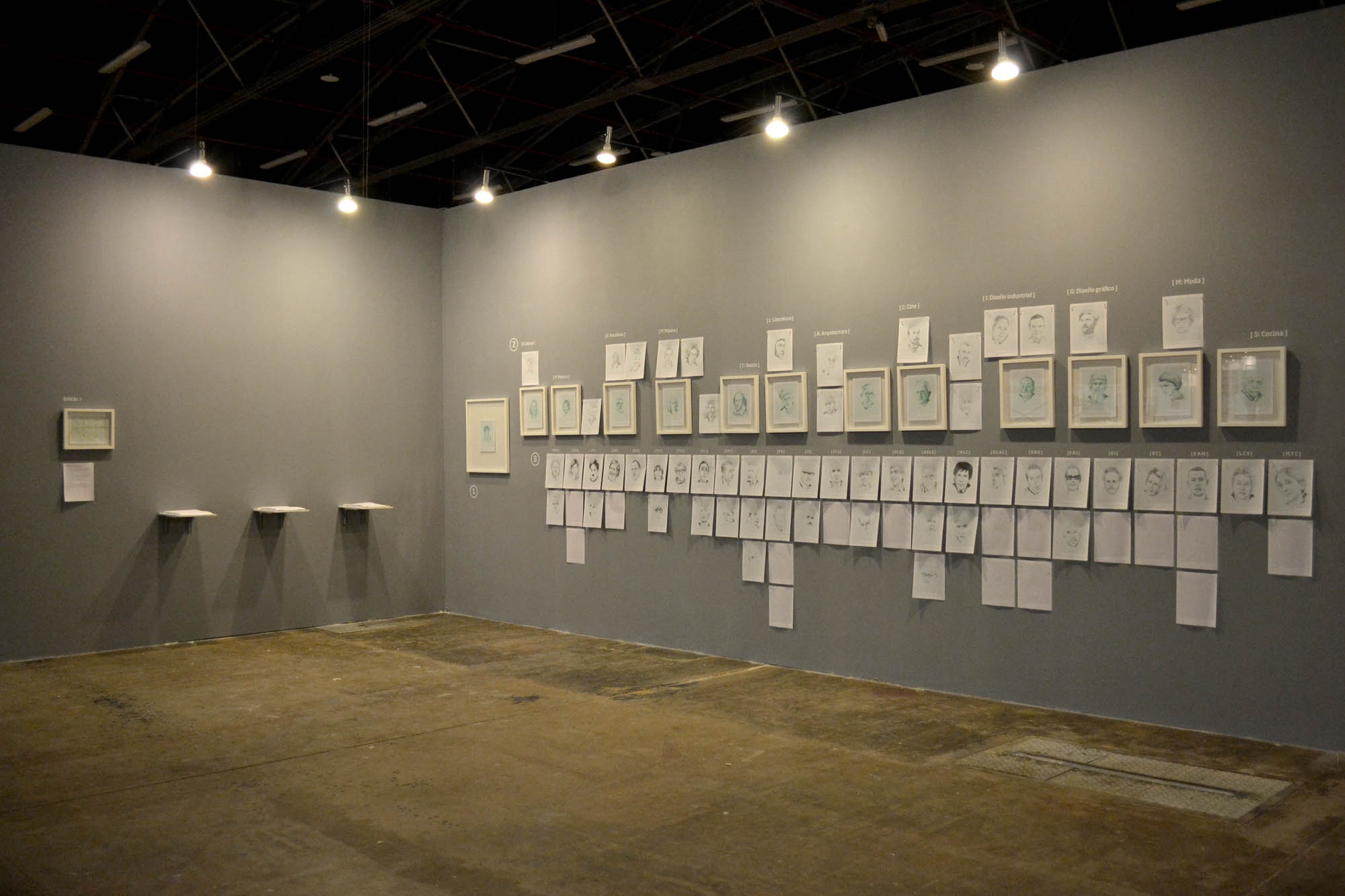
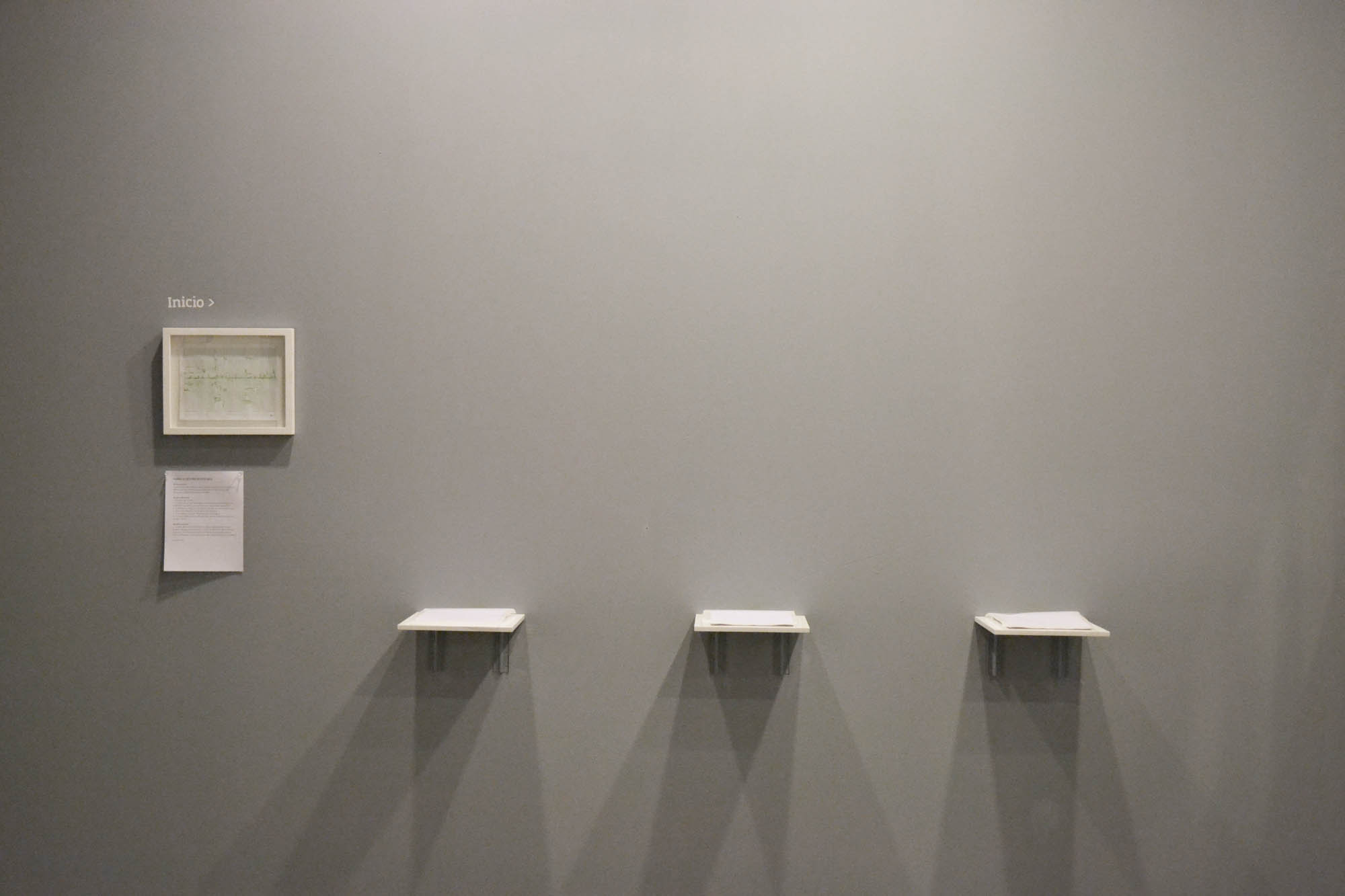

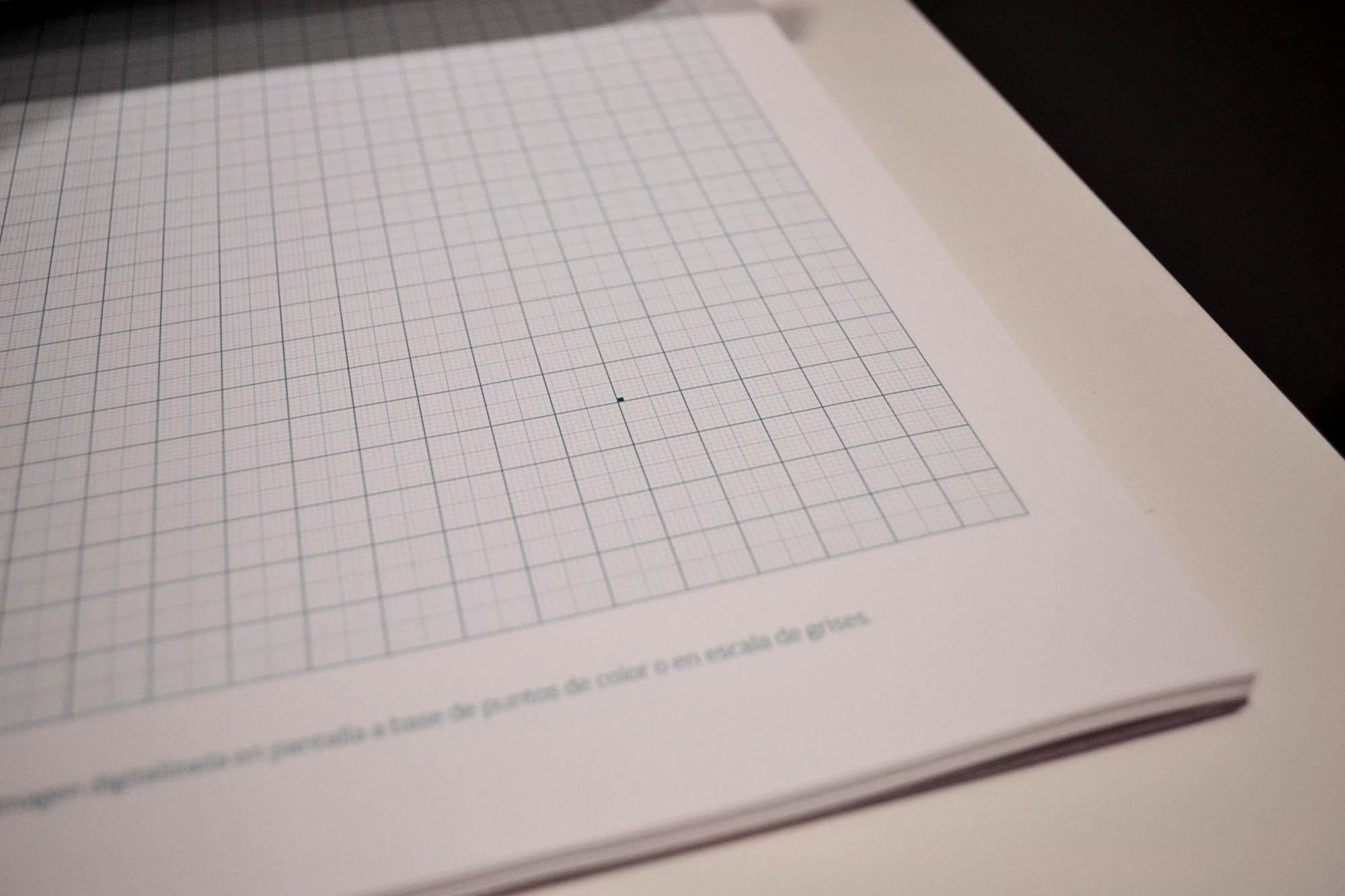



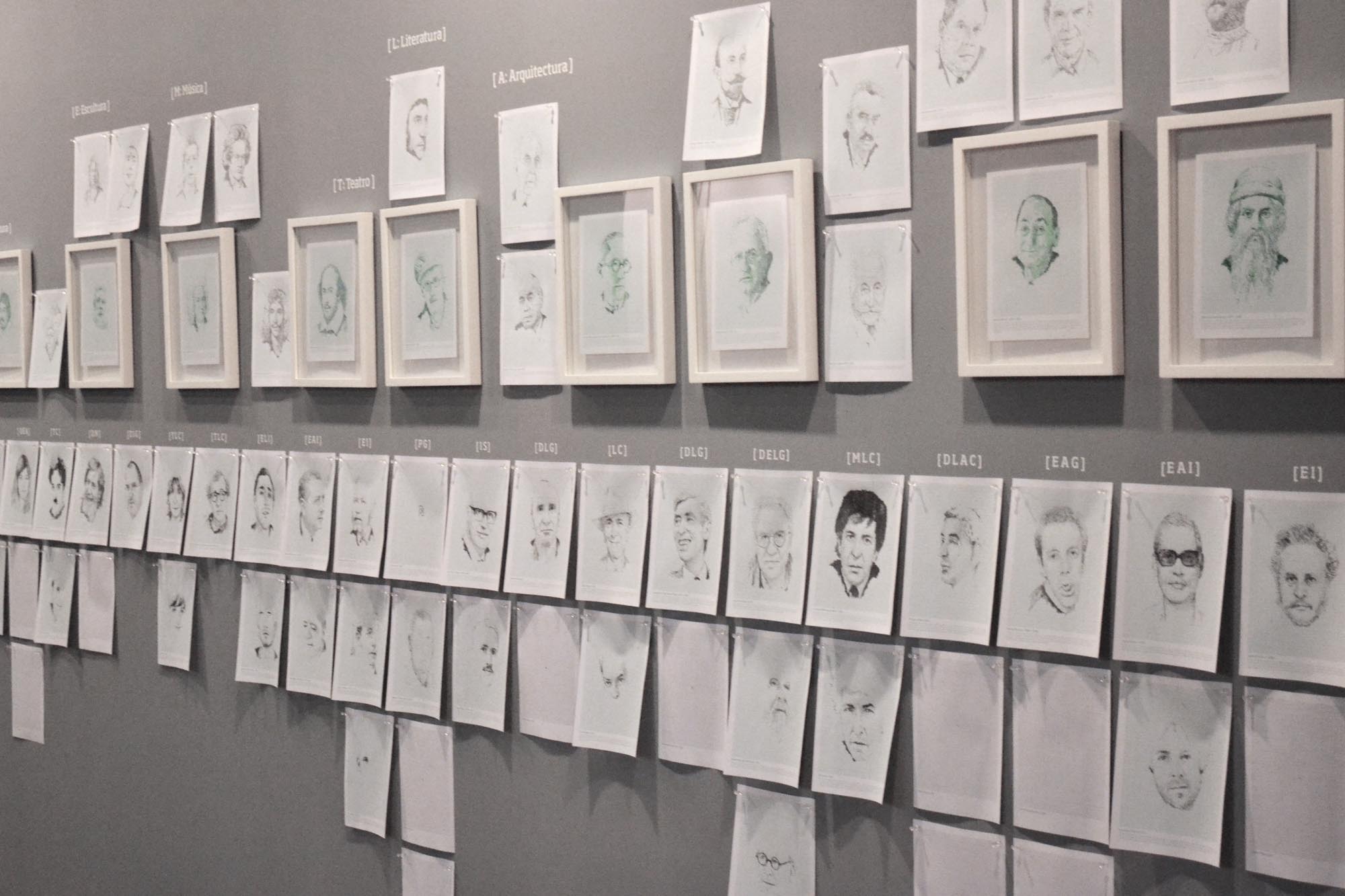
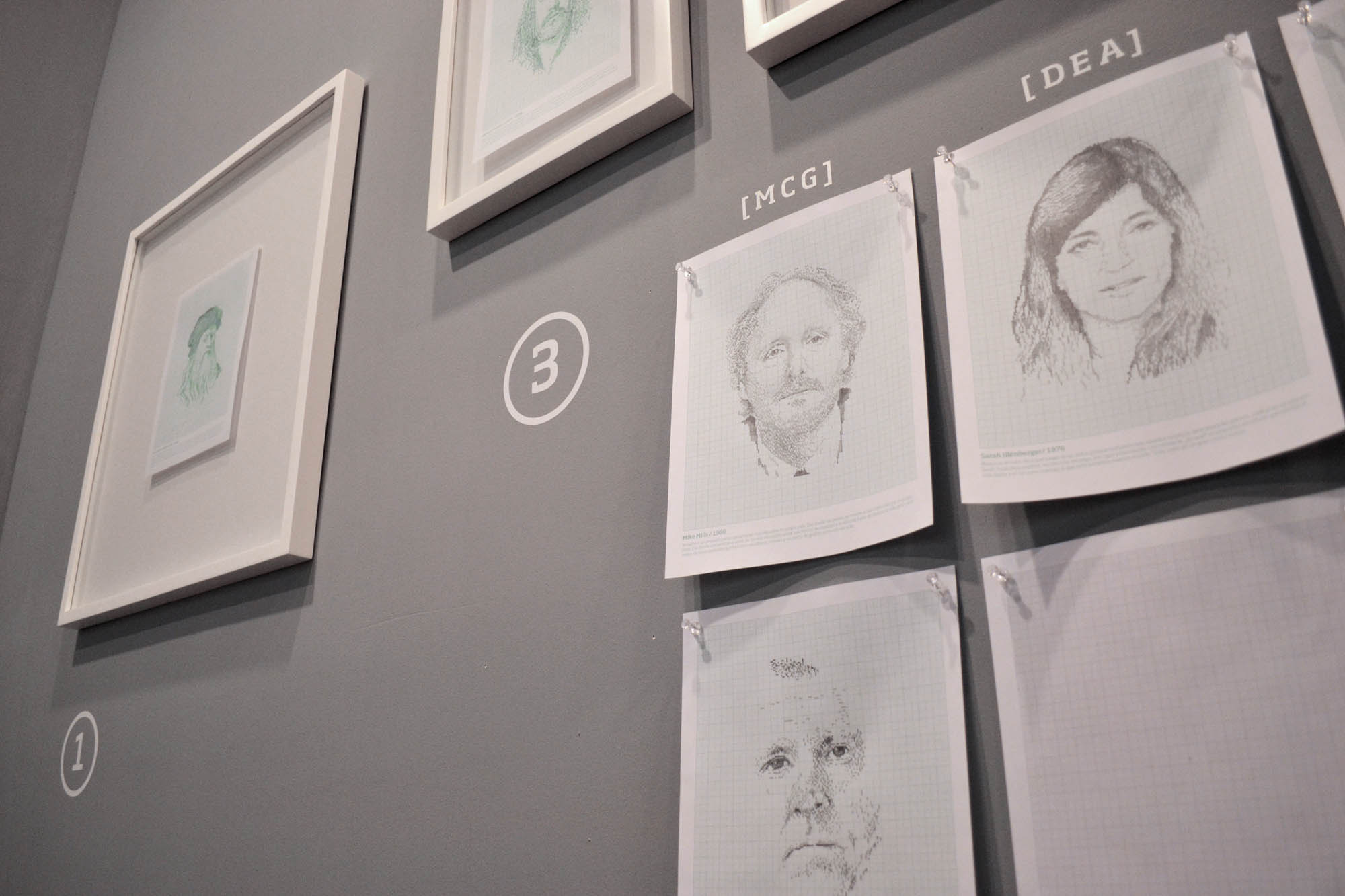
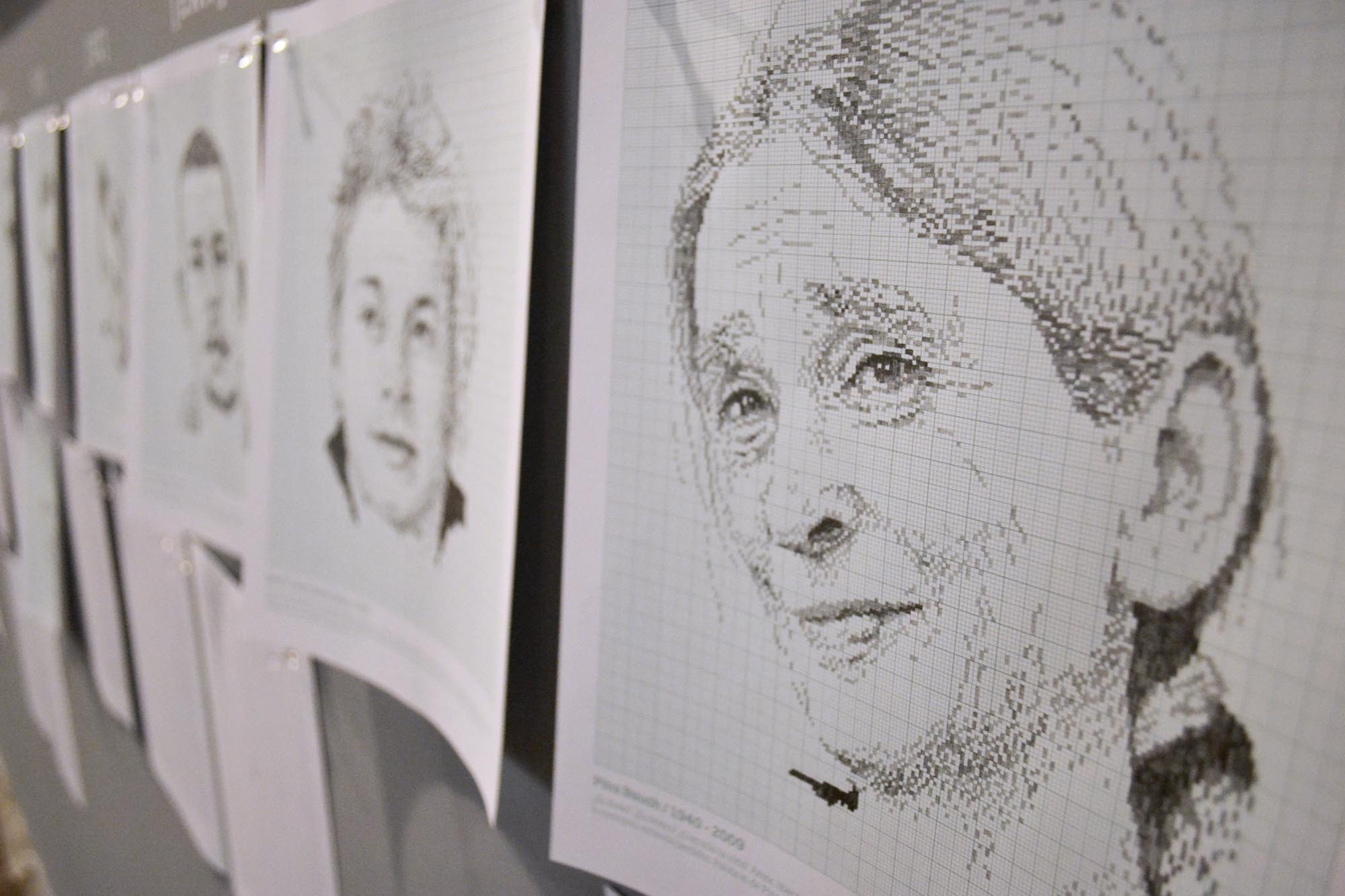
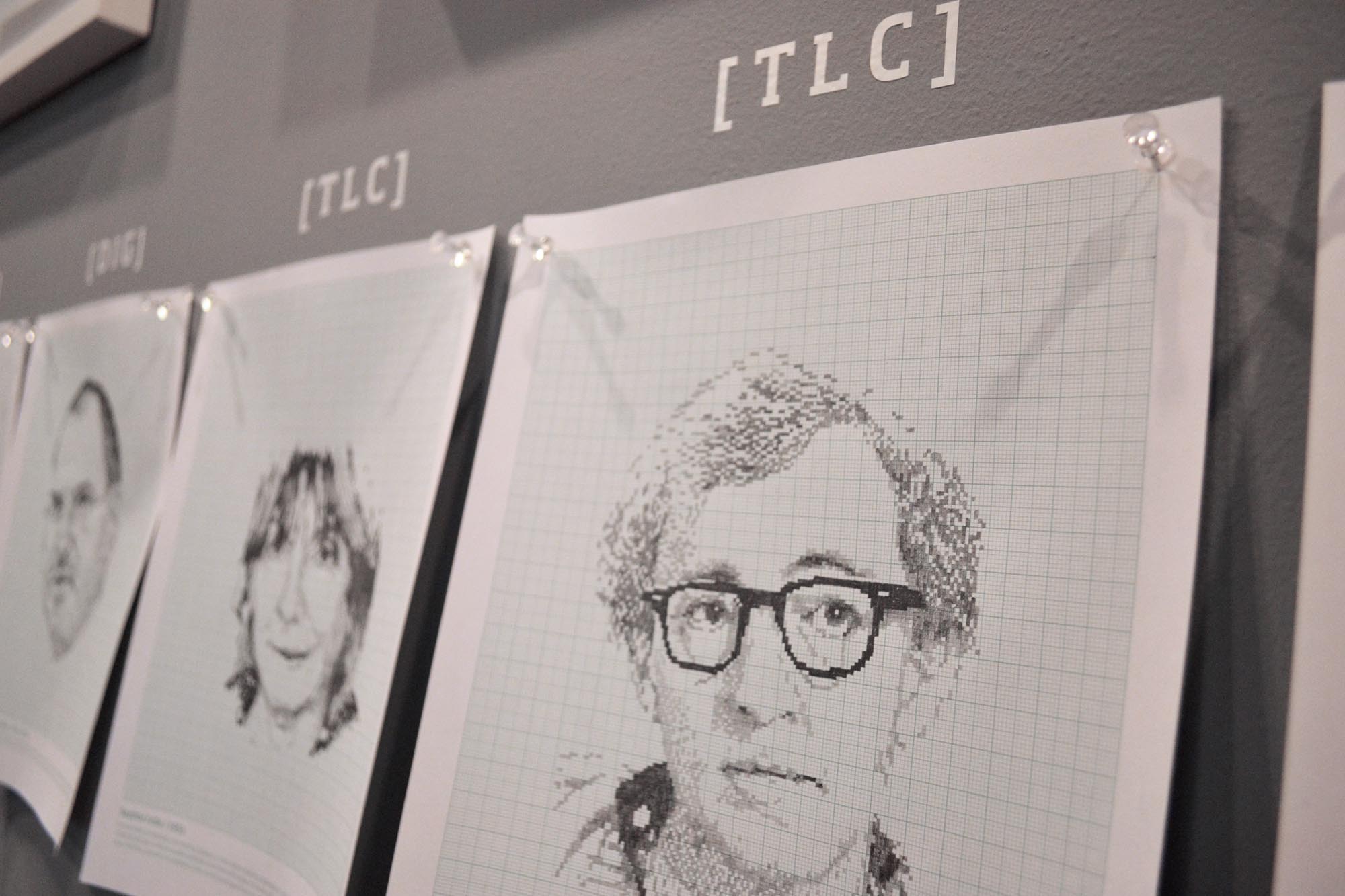



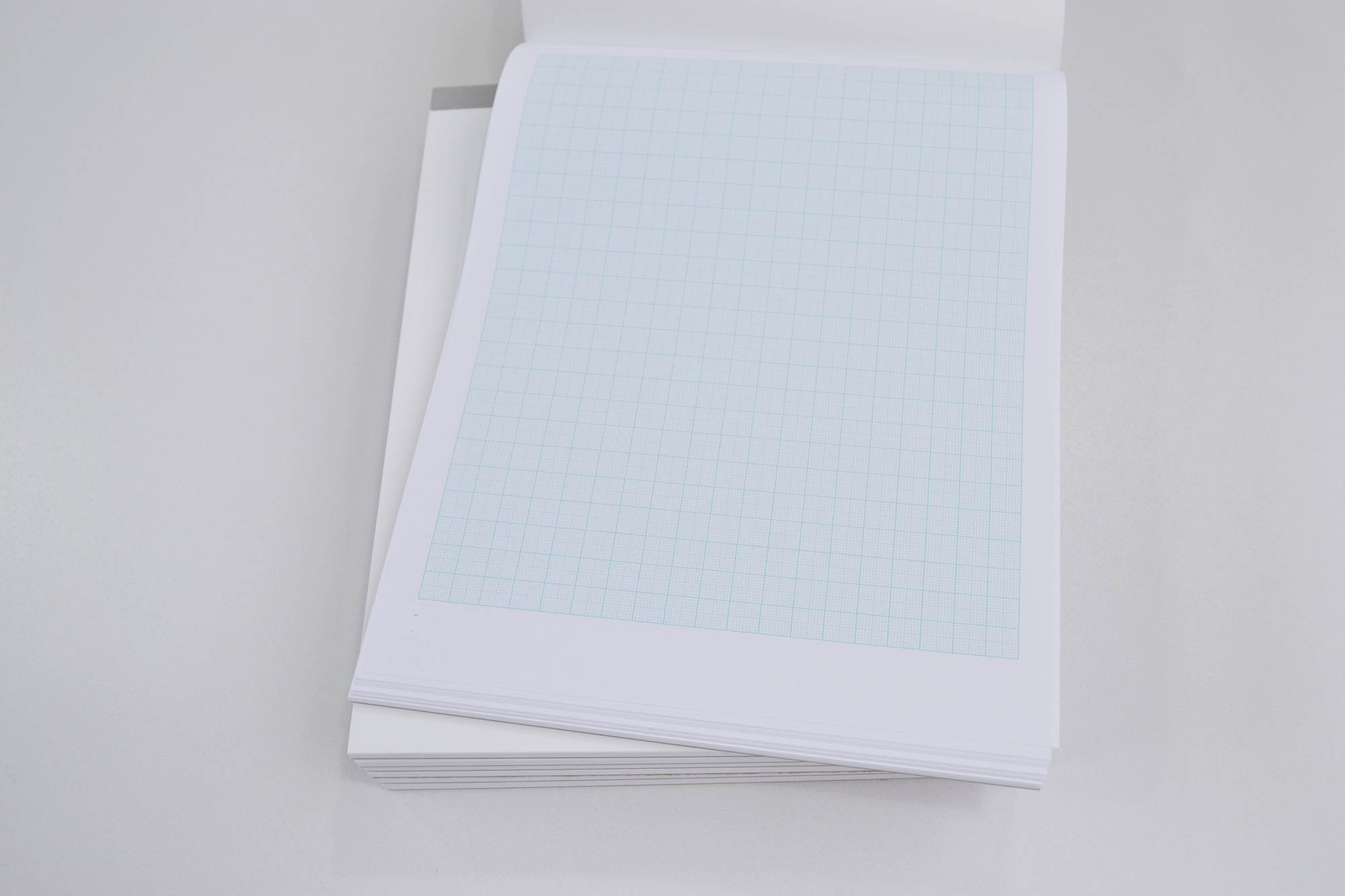
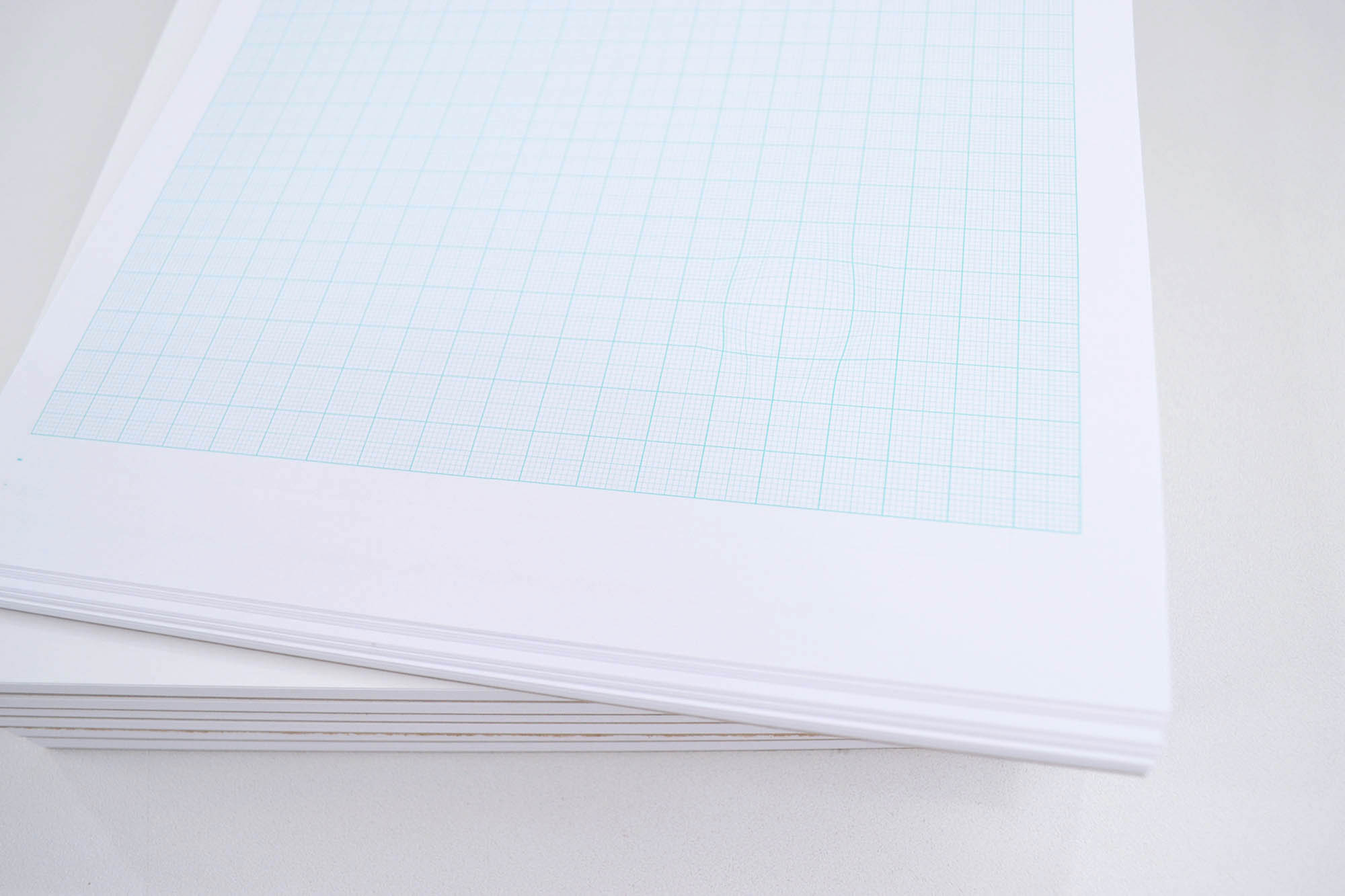

This project is
composed of a series of 70 portraits of creative authors made in pencil and ink
on printed paper. They are complemented by a short story that helps us to understand
this multidisciplinary puzzle or genealogical tree. It doesn’t work as a
traditional timeline but rather as a complex network of cultural, intellectual
and psychological links. As an attachment I made an artist book, similar to a block
of graph paper, which explains the origin of occidental art.
Group exhibition, Nodos de la emergencia - Artecámara (ARTBO), curated by Conrado Uribe
Group exhibition, Nodos de la emergencia - Artecámara (ARTBO), curated by Conrado Uribe